
The global authority in superyachting
- NEWSLETTERS
- Yachts Home
- The Superyacht Directory
- Yacht Reports
- Brokerage News
- The largest yachts in the world
- The Register
- Yacht Advice
- Yacht Design
- 12m to 24m yachts
- Monaco Yacht Show
- Builder Directory
- Designer Directory
- Interior Design Directory
- Naval Architect Directory
- Yachts for sale home
- Motor yachts
- Sailing yachts
- Explorer yachts
- Classic yachts
- Sale Broker Directory
- Charter Home
- Yachts for Charter
- Charter Destinations
- Charter Broker Directory
- Destinations Home
- Mediterranean
- South Pacific
- Rest of the World
- Boat Life Home
- Owners' Experiences
- Interiors Suppliers
- Owners' Club
- Captains' Club
- BOAT Showcase
- Boat Presents
- Events Home
- World Superyacht Awards
- Superyacht Design Festival
- Design and Innovation Awards
- Young Designer of the Year Award
- Artistry and Craft Awards
- Explorer Yachts Summit
- Ocean Talks
- The Ocean Awards
- BOAT Connect
- Between the bays
- Golf Invitational
- Boat Pro Home
- Pricing Plan
- Superyacht Insight
- Product Features
- Premium Content
- Testimonials
- Global Order Book
- Tenders & Equipment


The mystery behind the death of powerboat racing champion Don Aronow
Don Aronow, powerboat racing champion and founder of Magnum , Cigarette and Donzi , continues to fascinate – as does his mysterious death, discovers Daniel Pembrey .
When Cigarette founder and powerboat racing champion Don Aronow was shot dead on 3 February 1987 in Miami, the boating world was convulsed, but not everybody was surprised.
Emblematic of both the American dream and a particularly magnetic kind of American masculinity, Aronow was a frontiersman, a real-life Marlboro Man and a fearless racer. He was formidably competitive both on and off the water, brutally handsome and adroit at negotiating the line between the legal and the illicit – at least until the very end. A ruthless businessman, he equally relished a challenge in his personal life; “He’d fuck your wife in a second,” said powerboat Hall of Fame racer and boatbuilder Allan “Brownie” Brown, author of Tales from Thunderboat Row . Celebrated yacht designer Michael Peters , who went to work for Aronow the day before he died, said, “He was an asshole, but he was my asshole – a benefactor for whom I’ll always be grateful.”
On 3 February 1987, Peters was aged 34 and among the last people to speak with Aronow at the office of USA Racing Team, the latest of Aronow’s boat firms. “Don and I had had a meeting to discuss my salary. He gave me a spacious office, and I thought, ‘Finally, I’m starting to feel secure in life after a recent divorce.’ I remember taking a call from a guy named Ben Kramer and telling him that Don had already left his office for the day.”
At that time, NE 188th Street was a weed-strewn, low-rise strip. The sun was lowering in the wintery afternoon yet there was still plenty of warmth and light. There was fibreglass dust in the air and the pungent smell of resin and paint. Saws buzzed and machinery hummed at the various boat shops, most of which Aronow had started at one time or another. Radios blared out the hits of the day. Still riding high in the charts was The Bangles’ recent chart-topper Walk Like an Egyptian , originally inspired by the way people struggle to maintain balance aboard boats, apparently.
There was a jumpiness, an electricity in the air, too – not unusual on the street known locally as Thunderboat Row, Performance Street or Gasoline Alley. You never knew who might show up here, from royalty and high-born celebrity clients to drug-dealing low-lifes, by way of government officials, heads of the various boat firms and a diverse population of workers who earned their livings here.
Leaving his office that afternoon, Aronow was making for his North Bay Road residence, a 1929 Spanish-style waterfront mansion undergoing renovations, 30 minutes’ drive away. Members of the Bee Gees were neighbours on both sides. Aronow was now with his second wife, Lillian Crawford – a model, Palm Beach heiress and ex-girlfriend of King Hussein of Jordan. Seemingly he had everything to live for. “Always laughing” and “full of life” were typical depictions of the man. A five-year non-compete agreement with Cigarette Racing, one of the companies he’d sold, dated to 1982 and was about to expire. Nearly 60, he talked of taking up racing again.
His 193cm, still-athletic frame barely fitted inside the sporty white Mercedes-Benz two-seater in which he drove away from USA Racing Team’s office on Thunderboat Row. Peters recalled a sound like firecrackers – “a pop pop pop , eerie and ominous. I knew they were gunshots”. Little could prepare him for the scene two hundred metres up the street. Half out of his car, Aronow lay slumped, crimson blooming across his shirt. Congregating witnesses spoke of a dark Lincoln Continental having pulled up alongside Aronow’s white Mercedes.
“Who is this guy?” asked an arriving first responder. “That’s the king,” came the response, according to The Washington Post . “He built this entire street.” Airlifted to a nearby hospital, Don Aronow was dead within the hour.
The chaotic crime scene confronting police detectives was mysterious, not least because of the geography. The “Row” was island-like, bounded by water on three sides. The narrow street itself dead-ended to the east, requiring visitors to turn around to exit westbound. It would be easy to become blocked in here. The murder fell awkwardly between the sort of extravagant “statement killings” orchestrated by Colombian cocaine kingpins and the kind of professional contract hit carried out by killers keen to hide their tracks, or at least ensure a clean escape. Aronow evidently stopped his car willingly; he was found with his foot pressed fully down on the accelerator, the 5.6-litre Mercedes engine racing wildly – he’d put the car in neutral, almost certainly to engage whoever was inside the Lincoln. Furthermore, there were witnesses – plenty of them, if not always consistent in the details they shared with police. Was it even a planned killing, or some crazed crime of passion?
This was not the first mystery to surround Donald Joel Aronow. He was born in 1927, the son of an affluent taxicab owner whose family had emigrated from Russia and been bankrupted by the Great Depression. Don’s origin story moves around according to who’s telling it. Certainly, young Don became wealthy by building and selling tract houses in New Jersey. By various accounts, he then fled to Florida in 1960 to escape the mob. If true, it was a curious place to hide out from them. More plausibly, he was drawn to the Sunshine State by its warmth, excitement and a different form of escapism, as many tend to be.
In Miami, his head was turned by the nascent offshore powerboating scene and in particular the gruelling Miami-Nassau race that ran for 296 kilometres. Innovations such as fibreglass construction techniques and the drag-reducing deep V hull were taking chunks from the record times, and also from crews in rough seas. Dick Bertram was the man to beat both in terms of boat design and the racing itself. His company, Bertram Yacht , drew worldwide attention.
Aronow set out after Bertram, working with designers on NE 188th Street to create deep V fibreglass Formula boats, notably the seven-metre 233. To finance the development, he sold more civilised versions, with teak decks and sleeping quarters, to the general public. But he knew from Bertram’s experience that the way to promote and build his company was by winning races. Barely had he begun to win before he sold Formula to Thunderbird Boats. “You’re never gonna make a lot of money building boats,” he was quoted as saying. “You make a living doing that. You make real money when you sell the company.”
Next, he started Donzi, named after himself, again on NE 188th Street. He’d retained his key designers. The result was the 8.5-metre 007 , named after the gathering cinematic phenomenon. It was in 007 that he beat Bertram in the Miami-Nassau race in 1965. Again, he sold his company and started a new one, Magnum, evidently named after the double-sized bottles of champagne. He raced his 8.2-metre Maltese Magnum all over the world.
These races were filled with tales of derring-do: engine burnouts and explosions, crew members being knocked unconscious or needing airlifting to hospital – some even left marooned and bleeding amid circling sharks, not to forget the high-speed collisions, including one in rough seas under a hovering press helicopter. Audiences grew. Aronow won the World Powerboat Championship in 1967 (he’d go on to win it once more and the US championship three times), and in 1968, he sold Magnum.
Barely into his forties, Aronow was now a famous, feted and very wealthy man. It was the time of the sexual revolution, and his popularity with women was almost as legendary as his boating exploits, although some women were more circumspect. Marchesa Katrin Theodoli and her husband became the owners of Magnum. “I’ve met some extremely charismatic men, including Sean Connery and Roger Moore,” she said. “Those two managed to make you feel like you were the centre of their world. They conveyed a warmth and a feeling of genuinely liking you. Whereas Don Aronow was more brash, assertive – more resolutely a man’s man. He gave the impression that he felt he could take whatever he wanted.”
Like others who bought a boat company from Aronow, the Theodolis had reason to be wary. A pattern emerged whereby Aronow would sell his companies and then seek to eclipse them. He would build larger premises next door, on what was now known as Thunderboat Row, putting his erstwhile companies and new-found competitors in the shade. He might also try to buy the companies back, for cents on the dollar. It was testimony to the Theodolis’ diplomatic instincts that this would not become their fate.
“Don would compete with people his size,” said Michael Peters. “He didn’t pick on the little guy. He was an alpha male, like the male lion you see on safari. Don’t challenge him, and you were fine. But if you decided to take him on, don’t expect him to give ground.”
His next project was considered to be his masterpiece: the long lean Cigarette boats named after a vessel used to hijack rum-runners during Prohibition days. The idea of bad guys outracing other bad guys and seizing their fortunes appealed to Aronow reasoned The Washington Post five days after his murder. “Don was to offshore speed boats what Ben Franklin was to electricity,” an admiring Customs official told the newspaper. “I don’t want to make him out to be the greatest boatbuilder in the world, but in that particular class of boats, he was unequalled.”
Again, Peters gave a qualifying view: “Don perfected things already invented: hull shapes, construction techniques and engine setups. Certainly, he added sex appeal to it all.” In 1977, Cigarette introduced the “super sexy new 35 Mistress” (as the advertisement read). “When I started designing for Cigarette in 1978, Halter Marine had just acquired the company and they perpetuated the ethos,” said Peters. “The boss’s wife would lean over my drafting table with her ample bosom and say, ‘Remember, think sex.’”
Alongside the sexual revolution came the growth in the drugs trade. A certain nostalgia colours memories of the 1970s as a time of the “gentlemanly” marijuana business. A certain Ben Kramer, who came from a seemingly good home on the Intracoastal Waterway between Miami and Fort Lauderdale, started smoking pot at school and began selling it. Soon enough, he had his own yellow Cigarette boat with which to smuggle. He admired Aronow and acquired a corner of the Row, obtaining an interest in Apache, which in turn supplied the vessels he raced offshore (his fabled Warpath , based on a deep V Cigarette mould, won him a world championship). With his father, he also founded Fort Apache Marina on the Row, comprising a boat storage facility, waterfront restaurant and patio bar.
Rumours concerning Fort Apache continue to circulate, including one about the dock area, positing that camouflaged metal doors opened into large storage compartments, accessible at low tide – at night, say.
Whatever the truth of such rumours, the way South Florida’s drug business metastasised from marijuana to cocaine smuggling, to vast profits and lawlessness, would sustain five seasons of Miami Vice . In the real-life offshore racing seasons, a majority of the contestants might well turn out to be drug runners – say, George Morales, Sal Magluta and Willie Falcón, all convicted of cocaine trafficking. Race officials found themselves in invidious positions. “During the day we’re asked to patrol their race course during events for emergency rescues,” a Coast Guard official told the South Florida Sun-Sentinel . “But at night, we’re chasing many of the same guys for smuggling.”
Events took a turn towards the surreal when Carlos Lehder, the Medellín Cartel kingpin, started buying up Norman’s Cay, an island in the Bahamas some 330 kilometres off the coast of Florida, for his cocaine transport empire. By November 1981, a Time magazine cover feature was declaring that “an epidemic of violent crime, a plague of illicit drugs and a tidal wave of refugees have slammed into South Florida with the destructive power of a hurricane”. Miami claimed the nation’s highest murder rate at 70 per 100,000 residents, “and this year’s pace has been even higher”. An estimated “70 per cent of all marijuana and cocaine imported into the US passes through South Florida”, the feature reported. “Drug smuggling could be the region’s major [largest] industry.”
Much was explained by the state’s southern exposure and geography – its thousands of kilometres of coastline, coves and inlets. Revealingly, the Time feature predicted that Miami would remain, “as the late President Jaime Roldós of Ecuador put it, the ‘capital of Latin America’”. It reported Miami’s Federal Reserve branch to have amassed a currency surplus of $5 billion, “mostly in drug-generated $50 and $100 bills, or more than the nation’s 12 Federal Reserve banks combined.” The associated crime could strike anyone.
Even local residents the Bee Gees were not immune. Their father, Hugh Gibb, was mugged; Barry Gibb’s wife, Linda, had her purse snatched. “No woman should be alone in this city,” Barry Gibb warned Time . “Or man,” his brother Robin added. Around one-third of the region’s murders were believed to be related to drugs.
The drug money was corrupting banking, real estate and law enforcement. It fuelled an uneasy dynamism. “New hotels and office towers are rising in Miami, and once-sleepy towns nearby are growing skylines of their own,” chronicled Time . In these circumstances, it would have been extraordinary if the drug cash hadn’t found its way into Thunderboat Row and its fabled go-fast boats.
Aronow, it seems, would sell anybody a boat, especially for cash, but if you said you were using it to smuggle drugs, “Don wouldn’t have anything to do with you,” asserted Mike Kandrovicz from USA Racing Team.
It was into this volatile, heady mix that vice president George HW Bush – President Reagan’s lieutenant in the White House’s “war on drugs” – unwittingly stepped. Bush had long been an admirer of Aronow’s sleek vessels and had equally been disarmed by the man himself. He’d bought a Formula and a Cigarette from him, describing Aronow as “a joy to be around”. As director of the CIA, he’d also interacted with Aronow, recalling how “Don came and offered to help our country”. It was just one of the unusual clients Aronow had dealings with: oil-rich Arabs, Princess Caroline of Monaco and the Shah of Iran.
At Bush’s instigation, the US Customs Service took the fateful step in 1985 of placing a $1.7 million order for high-speed pursuit boats with Aronow’s USA Racing Team. Still subject to a non-compete agreement with Cigarette – which he’d bought back, then sold again in 1982 – Aronow was forbidden from producing deep V monohulls. So he commissioned a design from Michael Peters that split a V in two to create a catamaran. Given this unpromising start in life, the seven-ton, 11.9-metre Blue Thunder vessels acquitted themselves well. They were fast (more than 112km/h), good for interdiction activities (stable when boarding intercepted boats) and comparatively easy to drive. Yet deep V monohulls were now reaching 160km/h. Also, said Peters, “the Coast Guard drivers were left drowned in the wake of the offshore racers and the cocaine runners, who just had a different mentality come race time.”
The more problematic aspect was that Aronow additionally arranged to sell USA Racing Team, complete with the Blue Thunder contract, to Ben Kramer, who by now had drug smuggling convictions. It did not take the US Customs Service long to learn of this. They could not countenance procuring drug interdiction boats from a firm owned by a convicted smuggler and predictably moved to cancel the procurement contract. Aronow agreed to buy USA Racing Team back from Kramer, equally predictably for less than the consideration he’d received. Accounts of the dealings vary, but perhaps $2 million had been paid under the table in cash by Kramer when he bought the firm, using drug money. This sum, Aronow did not return. Herein lay the alleged motivation for Aronow’s murder.
The official record shows that, via a tip-off, police identified a mercenary street criminal named Bobby Young as the man who’d shot Aronow. Although witnesses failed to identify him in police line-ups, Young pled no contest to the shooting. Meanwhile, Kramer had been convicted of massive marijuana smuggling and money laundering, receiving multiple prison sentences including life without parole. More tips and leads pointed to Kramer as the man who’d ordered and paid for the hit.
The investigating detectives believed that Kramer was seeking to silence Young in jail, paying his legal bills, even possibly seeking to have Young killed. However, this “consciousness of guilt” made for a weak state’s case. Ultimately, Kramer pled no contest to second-degree murder. By this time – the mid 1990s – he was being kept in an isolation cell without, his lawyer claimed, adequate dental or medical care. “They had me in a cage for three years and nine months, with no daylight, no contact with human beings,” Kramer said.
Besides the state’s weak case, there were other, more fundamental doubts over whether Kramer had arranged to have Aronow shot. Kramer was hot tempered, the argument went; had he been sufficiently enraged by the USA Racing Team misfire to kill Aronow, he would have done so in 1985, whereas Kramer reportedly remained respectful towards Aronow until the end.
Separately, there were rumours that Aronow may have been assisting law enforcement, even becoming an informant – or at least that, in early 1987, he was about to be subpoenaed to give evidence about the USA Racing Team transactions. Five days after his murder, The Washington Post reported that a Customs official described Aronow as “co-operative” when Aronow had been approached for information about one of his clients. If the real motive for Aronow’s murder was him turning informant, surely others (on the wrong side of the law) were potential suspects, too?
Over the years, theories have developed to involve the Chicago mob, Colombian drug kingpins, cuckolded husbands or just a random shooter. Back in 1981, Time quoted a legal researcher living in Miami as saying: “I see people walking down the streets openly carrying guns, some in their hands, others in their holsters. You don’t dare honk your horn at anybody; you could end up dead.”
Certainly it is less difficult now to see how, in 1980s Miami, the murder of a man as magnetic as Aronow could garner 140 suspects at the Metro-Dade Police Department, each with the apparent motive, means and opportunity to have the “King of Thunderboat Row” gunned down in broad daylight. Bobby Young, the convicted shooter and the man who might have provided definitive answers, died in jail in 2009. The murder may forever remain a mystery.
Today, Thunderboat Row is a transformed, gentrified enclave. Only Magnum and a marina (not Fort Apache) are still here. The rest of NE 188th Street is covered with blocks of expensive condos promising comfortable waterside living. The boats tend to be smaller, more sedate, more family-oriented. At the east end of the street is now the Aventura Arts & Cultural Center; further east, across Biscayne Bay, on oceanside Sunny Isles Beach, stands the Porsche Design Tower. It lets you transport your luxury car up to the safety of your own unit, even as crime rates have dropped.
Cigarette, Donzi and other Aronow-conceived brands live on, as do the Miami to Key West race and offshore poker runs. But nothing compares with the go-fast scenes of the 1960s, 1970s and climatic 1980s. Those times can only be likened to the Old West: the Marlboro Man; the weed-strewn strip with its pioneers and settlers; the freebooters from south of the border bringing their lawlessness and loot and the law of the gun.
Michael Peters concludes, “If you want to find anything comparable today, you need to look elsewhere, maybe to the ‘ final frontier’ – Blue Origin, SpaceX, Bezos and Musk.” He pauses. “In the boating world, we won’t see the likes of Don Aronow again.”
First published in the October 2022 issue of BOAT International. Get this magazine sent straight to your door, or subscribe and never miss an issue.
Similar yachts for sale
More stories, most popular, from our partners, sponsored listings.
- Environment
- Real Estate
- Beer & Wine
- Cocktails & Spirits
- Openings & Closings
- Restaurant Guide
- Restaurant Reviews
- Top 100 Bars
- Top 100 Restaurants
- Concert Calendar
- Local Music
- Music Festivals
- New Times Pizza Week
- New Times Out to Brunch
- New Times Tacolandia
- Arts & Entertainment
- Eat & Drink
- Shopping & Services
- Sports & Recreation
- Readers' Choice
- Best of Miami Party
- Classifieds
- Advertise with Us
- Flipbook Archive
- Newsletters
- Promotions & Free Stuff
- Where To Find Miami New Times In Print
- Sign Up/Sign In
Falcon and Magluta
Part One CHUMP CHANGE
It was a day for redemption, a chance to win back a little respect after years of embarrassment. Everyone wanted to be in on the arrest of Willy and Sal, to be able to say they'd been there when the legend died. So on a rainy afternoon last October, as darkness fell over Sal Magluta's palatial La Gorce Island home in Miami Beach, dozens of federal, state, and local agents stood by as a specially trained, 25-man assault team from the U.S. Marshals Service stormed the house and captured the elusive Magluta. Five hours later, with the rain still pouring down, the same team of agents raided the Fort Lauderdale mansion of Willy Falcon.
Inside the houses, they found nearly one million dollars in cash and jewelry, a small amount of cocaine, and a kilo of gold. Chump change. Because in the age of the cocaine cowboy, Falcon and Magluta weren't just hired hands. They owned the ranch. From 1978 right up until the day the two were finally arrested, federal prosecutors say the Miami Senior High School dropouts acquired more than $2.1 billion in cash and assets by smuggling at least 75 tons of cocaine into the United States.
In their heyday, according to prosecutors, Augusto Falcon and Salvador Magluta controlled the largest cocaine smuggling organization on the East Coast and one of the top five in the world, a massive assemblage of planes and boats that funneled coke from the Colombian cartels in Medellin and Cali to the streets of Miami, New York, Washington, D.C., Charleston, South Carolina, and dozens of other cities across the United States.
Investigators say the partners laundered their profits through offshore bank accounts and dummy corporations established in the Bahamas, the Netherlands Antilles, and the Republic of Panama. The Panamanian corporations were set up in the early Eighties, with help from attorney Guillermo Endara. By the end of the decade Endara would be installed as the president of that nation after Manuel Noriega's regime was overthrown by invading U.S. troops because of Noriega's alleged involvement with drug traffickers.
The recent discovery of Endara's ties to Falcon and Magluta created a scandal in Panama and continues to be a source of humiliation for the United States government. Despite the fact that he acted as treasurer for some of them, Endara says he didn't know the companies he helped incorporate were in any way connected to money laundering and drug trafficking. He also claims he never met Falcon or Magluta, and says he didn't know the companies were established for their benefit. "I never knew them," Endara told U.S. News & World Report, which this past December offered the first detailed account of the Panamanian president's link to the two smugglers. "They never called our office."
At home in South Florida, prosecutors say, Falcon and Magluta hid millions of dollars in local banks they secretly controlled. Loans from those banks financed construction companies and management firms that built or bought millions of dollars worth of property across Dade County. Federal agents have seized houses in Coral Gables, Flagler Waterway Estates, and Doral Woods, penthouses on Brickell Key Drive, and a ranch in South Dade, as well as apartment complexes in Hialeah and Miami. Falcon and Magluta also owned a condominium in Vail; a farm, complete with airstrip, south of Lake Okeechobee; and real estate in the Florida Keys. (See accompanying sidebar, page 22.)
Falcon and Magluta constructed their empire, not while maintaining a low profile, but while basking in the public spotlight. Throughout the early and mid-Eighties, both men, and many others within their organization, were stars on the powerboat racing circuit - the preferred sport of drug smugglers. Falcon won the 1986 Offshore Challenge off the Florida Keys; Magluta won three national championships and was a member of the commission that oversees the American Power Boat Association.
Their ability to operate in plain view of local police and federal agents gave them the aura of modern-day Untouchables. "They were like gods in the doper community," says Sean Convoy, a supervisor for the U.S. Marshals Service in Miami. "All the other smugglers talked about how invincible they were. All you'd hear was, `Willy and Sal this' and `Willy and Sal that.' I don't think there was a police agency here that didn't have something going at some time to try and catch them."
Agents who took part in the October raids say that when the two men were finally arrested, they offered no resistance and seemed to be in a state of shock. Magluta was found, cold and shivering, hiding in the bushes in his yard. And standing in the rain outside his house, handcuffed, dripping wet in a pair of shorts and a T-shirt, the five-foot-nine-inch Falcon no longer seemed so mythical, either. "You were number one," special agent Humberto Rapado, of the Florida Department of Law Enforcement, whispered in Spanish as he led Falcon away, "but I got you now."
FIRST OFFENSE Time will tell whether the government will get to keep Willy Falcon and Sal Magluta. Holding on to them has never been easy. In 1988, while he was a fugitive from a nine-year-old Miami drug conviction, Magluta bumped into a couple of detectives at a local office-supply store. Recognizing him, the cops carted him off to jail. Days later, however, he was inadvertently released after court records were mysteriously altered to say he had already served his full, fourteen-month sentence. Magluta remained free for another three years.
Falcon, too, has had his share of luck. Arrested twice and indicted on at least three other occasions for drug and firearms charges, he never spent more than a week in jail. Until now.
If the men are convicted on the two dozen drug charges amassed against them, they will likely spend the rest of their lives in prison. To get them out of trouble this time, Falcon and Magluta have assembled a team of some of the nation's best-known defense attorneys, including Frank Rubino - who is in the midst of the Noriega trial here in Miami - and Albert Krieger - who is in New York defending the reputed godfather of organized crime, John Gotti, on trial for murder and racketeering.
"This is not a hopeless case," says prominent Boston attorney Martin Weinberg, another member of the defense team. "We believe we have a substantial chance of prevailing." Because the prosecution's case relies largely on the word of convicted informants who have agreed to testify in exchange for reduced prison terms, if the defense is able to discredit that testimony, they might succeed in winning an acquittal. "This case revolves around whether or not a jury will believe a criminal's accusations against people who are presumed innocent," says Weinberg. "There have been no seizures of substantial amounts of money or drugs from either Mr. Falcon or Mr. Magluta."
The trial, expected to begin in October and last at least three months, is sure to be a far different affair than Falcon and Magluta's first appearance in court on drug charges. Back in 1979 they were a pair of nobodies, two drug smugglers swept up in a massive and ultimately inane sting operation dubbed "Video Canary." Scores of people were arrested in the Miami/Metro-Dade police investigation, yet few served more than token sentences.
Falcon was 24 years old at the time; Magluta was 25. After twice dropping out of Miami High, Magluta had earned a diploma and was studying law enforcement at South Dade Community College. The respectful, well-mannered young men were represented by Melvyn Kessler, a highly regarded local attorney, who pointed out to Dade Circuit Judge James Jorgenson that this was his clients' first offense. Besides, Kessler said, the two men had roots in the community, and both had hard-working parents. Finding them guilty of conspiracy to sell cocaine, Judge Jorgenson sentenced Falcon and Magluta to five years in prison, and suspended all but fourteen months of the term. He also allowed them to remain free while they appealed their conviction.
The judge had no idea that those appeals would drag on for more than seven years, nor that when they were finally exhausted in the summer of 1987, Falcon and Magluta would go into hiding instead of turning themselves in to authorities. Nor did he realize that the two men standing before him were already fully committed to establishing a drug empire and had taken significant steps to see that it would succeed.
In fact, thanks to Falcon and Magluta's Colombian connections, millions of dollars had been pouring in for at least the past two years, so much cash that they had to take pains to conceal it. In 1978, according to federal prosecutors, the aspiring drug lords had found just what they needed: a willing and unscrupulous bank.
Falcon had known Ray Corona since 1972, when Corona was working for his father, Rafael, at the Bank of Miami. When the Coronas assumed control of Sunshine State Bank in 1978 - thanks largely to cash furnished by drug smuggler Jose Fernandez - it was a natural step for Falcon to ask his old friend Ray if he could make some secret drug-money deposits.
Ray Corona had been aware since 1976 that Falcon was in the business of selling cocaine, according to a 1991 sworn affidavit by DEA agent David Borah. Corona and Falcon had lived in the same condominium complex since 1977; Corona claimed he saw cocaine, scales, and other evidence of drug peddling in Falcon's apartment. In 1980, when he went with Falcon to a house to pick up some cocaine for a party, Coronas added, he saw kilos of cocaine in one of the rooms, stacked from floor to ceiling.
Part Two At first, Corona said, he had allowed Falcon and Magluta to store cash in safe deposit boxes at Sunshine. Not long afterward, he began making "loans" to the men, loans that were repaid to the bank out of the money hidden in the safe deposit boxes. It was one of the most basic laundering schemes available: Falcon and Magluta were simply swapping "dirty money," whose origins they could never explain to authorities, for "clean cash" that came from a series of seemingly legitimate bank loans. That money could be used to buy property or to invest in businesses. On one trip alone, in the summer of 1979, Corona claimed, Falcon and Magluta arrived at the bank with two suitcases containing $20 million in cash.
In 1984 Ray and Rafael Corona were indicted on money-laundering charges stemming from their association with Jose Fernandez. Ray Corona told Borah that a few days later, after the bank closed for the night, Falcon, Magluta, and several helpers arrived with suitcases that they stuffed with 50- and 100-dollar bills.
Ray and Rafael Corona were convicted in 1987, and both are still in federal custody. Ray Corona is currently serving a sixteen-year sentence at a federal prison in Atlanta. He is expected to be a pivotal witness against Falcon and Magluta in their upcoming trial.
THE EASY WAY OUT Augusto Jay, however, will not appear as a witness. Described by federal prosecutors as a top lieutenant in the Falcon-Magluta organization, Jay was indicted and convicted for drug smuggling in 1988. Jay, 35 years old, is serving a life sentence at the Marianna Federal Correction Institute west of Tallahassee. Asked several times to cooperate with authorities in the Falcon-Magluta prosecution, he refused.
"The thing that was surprising and disappointing to me," says Ken Bell, the assistant U.S. attorney who prosecuted Jay in North Carolina, "was at the time of his sentence, Jay was 32 years old, he had a wife and two young kids, and he chose to serve a life sentence without parole rather than cooperate. It was misplaced loyalty and a perverted sense of honor."
In refusing to trade what he knew about his bosses for a lighter sentence, Jay merely highlighted a problem that federal agents had been encountering throughout their pursuit. From the outset, Falcon and Magluta surrounded themselves with people they could trust - mostly family members and childhood friends. Many, like Augusto Jay, shared the common bond of having fled Cuba as young children in the late 1950s and having grown up in Little Havana.
"We got caught up in the middle of the Cuban revolution," Jay says by phone from Marianna. "We were kind of transplanted here and left up in the air. We didn't have a real foundation in this country. We were being taught one thing in the house and we were watching another thing on TV. If you want to have a pretty girl, you have to have a nice car," he continues. "We didn't know what the meaning of all this was. The only way to get equality was through money, I thought." Drug smuggling, he says, was "the easy way out. You fall for it and you get trapped in this lifestyle, and then it snowballs."
Investigators believe Falcon and Magluta started off as small-time dope peddlers in high school. Of the two, Falcon was the charmer, the ambassador of the fledgling organization, the one who typically would establish important contacts. Once Falcon had set up a meeting, it would be Magluta who negotiated the fine points of the deal, weighing the risks against the benefits.
On his own, it's unlikely either man would have accomplished much. But together they were almost unstoppable. They worked their organization like any business, developing the equivalent of a corporate philosophy and a vision. They treated people fairly, recognizing the fact that violence is counterproductive. If you don't steal and you don't rob and you don't kill anybody or threaten anybody, Augusto Jay explains, you reduce the risk of having those things happen to you. "If you're a nasty person," says Jay, "you're going to have to deal with nasty people."
Not that the pair was immune to the nastiness inherent in their line of work, especially as business burgeoned. In 1985 Falcon's mother was kidnapped by a rival drug faction. The abduction was never reported to police, but according to law enforcement sources, Falcon paid a $500,000 ransom for his mother's safe return. Sources also say there were unsuccessful attempts to snatch Falcon himself.
Jay says that since his conviction, he has tried to enrich his life through prayer and Bible study, and he now counsels younger convicts about the evil excesses of the drug lifestyle. But religion has drawn another line for Jay to walk. God, he says, would not want him to testify against Falcon and Magluta. And if he violated that belief, the penalty would be far greater than anything mortal man could level against him.
Jay also believes that the U.S. government steamrolls drug defendants, violates their rights, and lies about them. By way of example, he cites prosecutors' claims that Falcon and Magluta accumulated $2.1 billion from their drug enterprise. "They're crazy," Jay responds. "$2.1 billion! That's just mad. That's just completely mad. The bigger the case, the bigger the glory for whoever is behind it. I'm not saying that no wrongs have been committed, I'm just saying they've been exaggerated."
HENDRY COUNTY When he died in 1980, Earl Dyess, Sr., sheriff of Hendry County for the previous twenty years, was hailed as a great lawman and a tireless fighter in the war against drugs. At Dyess's funeral, an aide to then-Gov. Bob Graham lamented, "Florida lost a friend and one of its top law enforcement officers."
In 1984 Jack Devoe, who owned his own aviation company at Opa-locka Airport, began cooperating with federal agents. During the late Seventies and early Eighties, Devoe told authorities, he and his men worked for Falcon, Magluta, and Augusto Jay, smuggling cocaine into South Florida. While they used several sites, their principal "off-load" point, Devoe said, was Falcon and Magluta's ranch near Clewiston, just south of Lake Okeechobee in Hendry County.
Typically, when one of his pilots flew a load of cocaine from Colombia or Bolivia - usually with a stopover in the Bahamas - Devoe would fly cover, or countersurveillance, during the south Florida leg of the trip. By watching for DEA or Coast Guard planes, he could warn a pilot away from the ranch so that its landing strip wouldn't be discovered. Once the plane was on the ground, Devoe claimed, there was no reason to worry. "They told me that the sheriff was on the payroll to guard the road or to assist them in the smuggling at the ranch," Devoe stated in a 1989 sworn deposition. For a brief time, he added, the operation was halted when the sheriff died. "[Falcon and Magluta] said it will be some time before the new sheriff is on the payroll," Devoe stated. "I believe it was a month or so before we did another trip."
Devoe is currently in the federal witness protection program, after having testified at numerous trials across the United States, including that of Carlos Lehder, one of the founding members of the Medellin cartel and one of Falcon and Magluta's principal suppliers.
Although he never named the "sheriffs," investigators say Devoe was referring to Earl Dyess, Sr., and his son, Earl Jr. (After the elder Dyess was stabbed to death outside his house in 1980, his son replaced him and has been re-elected ever since.) In 1984 the Florida Department of Law Enforcement quietly began investigating Devoe's claims of corruption in Hendry County, but Russell Clark, a former FDLE agent who led the investigation, says that because Devoe was quoting his bosses and never actually saw either of the Dyesses, it was impossible to corroborate the allegation that Falcon and Magluta controlled the sheriffs. "It very well could have been some deputies," Clark says.
The issue became moot a few years later, investigators say, when Falcon and Magluta sold their ranch near Lake Okeechobee and moved their operations closer to home.
THE PANAMANIAN CONNECTION With their illicit importation business booming, Sunshine State Bank couldn't possibly launder and conceal all the proceeds. Ray Corona told federal agents that he had introduced Falcon and Magluta to Miami attorney Juan Acosta, so that Acosta could help them take advantage of offshore bank accounts and corporations.
Acosta was of particular assistance in setting up Panamanian corporations through his friend Guillermo Endara. Enterprise Ramadan Inc., Pilea S.A., and Hassid Enterprise Inc. were three of the Panamanian corporations incorporated by Acosta through Endara's law firm. Each company was involved in buying property in and around Miami, the ownership of which was later transferred to members of Falcon's and Magluta's families.
The 62-year-old Acosta was gunned down in his northwest Miami office in 1989, in front of his secretary. "He was very distinguished. He was very nice. I don't know why anybody would want to kill him," his housekeeper said at the time. The case is still open. Miami homicide detective Ron Illhardt believes the murder was the work of a Colombian hit squad - Acosta had reportedly set up a deal to smuggle a load of cocaine through the Bahamas but the shipment was intercepted by U.S. officials and the Colombians blamed him.
Defense attorney Frank Rubino, who will begin preparing for the Falcon- Magluta trial after he completes his work on the Noriega case, says he will attempt to subpoena Guillermo Endara as a witness. In spite of Endara's claims to the contrary, Rubino says Endara met with Falcon and Magluta on several occasions and was aware he was dealing with drug traffickers. "We can't force him to come up here," Rubino says, "but I'd like to ask him a few questions as to his relationship with Willy and Sal and whether he's willing to vouch for the things he's done for them, and for their character."
Part Three The Panamanian president's endorsement of his clients would carry some weight with an American jury, Rubino speculates; it was, after all, the United States government that put him in power. But Rubino admits seeing Endara on the witness stand is unlikely. "I think the government will do their very best to shield him," he says, "and I'll tell you why: they sure don't want to invade again and replace him with someone else."
Besides the Panamanian connection, Falcon and Magluta availed themselves of dummy corporations in the West Indies and the Caribbean. In 1983 an investigation into a bank robbery and murder in England led Scotland Yard to the door of Shaun Murphy, who had helped the thieves launder cash through offshore accounts in the British Virgin Islands. When Murphy, feeling the squeeze, turned informant for British authorities, he also had plenty of information for American lawmen.
Most of Murphy's business had been conducted with Americans, and when he opened his files to DEA inspection in 1986, they read like a Who's Who of the U.S. drug trade. The biggest case that initially spun out of the so-called Isle of Man investigation were the arrest, indictment, and conviction of powerboat racer and pot smuggler Ben Kramer and Miami lawyer Mel Kessler, who had become a money launderer for his wealthy, crooked clients.
Although the issue wasn't raised at Kessler's trial, two of his clients were Willy Falcon and Sal Magluta - whom Kessler had continued to represent after the 1979 drug trial. Defense attorneys believe that Kessler, who is serving a 30-year prison term, is cooperating with prosecutors and will testify against his ex-clients at their trial. While federal officials won't confirm this, they eagerly point out that attorney-client privilege does not extend to a criminal conspiracy (such as money laundering) between a lawyer and his client. "It would not surprise me at all that he may be a witness," attorney Frank Rubino comments.
Based on documents Murphy provided, prosecutors claim that Murphy, along with Kessler and Juan Acosta, assisted Falcon and Magluta in setting up dozens of offshore corporations in the Netherlands Antilles, the Bahamas, and the British Virgin Islands. Once drug money was smuggled to these countries and placed in dummy corporation accounts, it would be transferred from one Falcon-Magluta corporation to another until its trail was impossible to trace.
The drug dealers' assets were so extensive, claims one federal investigator who requested anonymity, that Falcon and Magluta probably aren't aware of just how much they own. "We found 163 corporations, either offshore or domestic, that they had connections to," the investigator says.
BOAT PEOPLE During the 1980s, when law enforcement agents wanted to know who was involved in drug smuggling, all they had to do was head down to the Florida Keys and take in a few powerboat races. Among the princes, sheiks, and wealthy businessmen who found the sport an exciting diversion were some of the big-time drug runners of all time.
George Morales set a world record during a 1985 race from Miami to New York, piloting a 46-foot catamaran through 1257 miles of rough water in less than twenty hours. Hailed by Motor Boating and Sailing magazine as the best speedboat driver in the world, Morales pleaded guilty in 1987 to charges of drug trafficking and tax evasion. After years of smuggling marijuana and Quaaludes into the United States from Colombia, he was arrested while working on a deal to bring more than a ton of cocaine into South Florida. Like fellow racer Augusto Jay, Morales, who was sentenced to a sixteen-year prison sentence, claimed honor would prevent him from snitching on any of his business associates. "I'm not willing to testify against no one," he told a federal judge at his sentencing. "I have my principles, you know." (It appears that prison eventually loosened those principles: Morales's sentence was reduced to seven years after he agreed to cooperate with federal agents, and he was released in December.)
Ben Kramer won the 1984 American Power Boat Association's World Cup and a national championship in 1986. Not merely content to pilot boats to victory, Kramer invested millions constructing a marina and factory on Thunderboat Row, the fabled North Miami Beach street that is the heart of the powerboat-racing industry. Those millions, federal prosecutors would argue successfully, were the profits from tons of marijuana Kramer smuggled into the United States.
Brazen and arrogant, Kramer once smuggled 45 tons of pot into New York aboard a barge the size of a football field. He believed - and rightly so, at the time - that police and U.S. Customs agents would never suspect that a barge whose decks were laden with a ton of cement had its ballast tanks filled with Colombian buds. Kramer was convicted in 1990 on racketeering and drug-smuggling charges and is in the federal penitentiary at Leavenworth, Kansas, serving a life sentence without the possibility of parole. (Kramer's name also surfaces frequently in connection to the murder of racer and boat builder Don Aronow, who was gunned down Feb. 3, 1987 on Thunderboat Row in the midst of designing the Blue Thunder, a powerboat that would be used by federal drug agents to interdict drug traffickers. Kramer allegedly offered to buy the company from Aronow so that he could stop production of the boat. Aronow initially agreed but later reneged, costing Kramer $600,000.)
"At one time, two-thirds of our national champions were convicted drug smugglers," asserts John Crouse, powerboat racing historian and author of Searace: A History of Offshore Powerboat Racing. Often, Crouse says, while smugglers chopped through the waves for fun and bragging rights, lawmen roamed the parking lots, jotting down license-plate numbers, taking notes, and snapping photos.
"The offshore powerboat racing machine was really the catalyst for the major drug movement in the United States," Crouse says. In the 1970s, marijuana was the primary Colombian import, usually hauled to the United States by freighter. Pot-laden ships anchored off the coast in international waters and off-loaded bales of cargo onto smaller boats to sneak ashore. "That meant they had to have fast boats in the middle of the night that could outrun the law, and that's where the offshore racers came in," says Crouse. "The same guy that raced on the weekends would be out running at night. They'd pick up 50 grand a night." When cocaine - and airplanes - began to dominate the market, Crouse adds, powerboat drivers continued to be employed to ferry cargo from landing strips on offshore islands to the mainland.
The way bankers and brokers might socialize at a country club with other bankers and brokers, Falcon, Magluta, and other competitors gathered at marinas, comparing boats, boasting about their business exploits, and betting on each other's races. Falcon raced under the team name Cougar; Magluta's team was Seahawk.
Money, of course, was no problem, despite the fact that boats sell for $500,000, and most teams have more than one boat. (Engines can cost another $300,000. Even a propeller can cost as much as $10,000.) "You're looking at a million dollars just to be competitive," says John Crouse. "And that's not competitive competitive. That's not being the ace of aces. That's just running with the hot dogs."
For a time Falcon and Magluta were among the sport's very best. "They had the best boats, the best equipment," says Marc Mercury, president of the Offshore Power Boat Racing Association. "They were fierce competitors. They were there to win. They would hang it right on the edge, pushing it to the limit. Like my grandmother told me: `If you go to fight to win, you're gonna lose; if you fight to kill, you're gonna win.'"
(The members of Falcon and Magluta's organization all fought hard. Juan Barroso, a navigator aboard Magluta's Seahawk team, was arrested in 1990 after allegedly dumping 548 pounds of cocaine in the waters off Dania Beach in Broward County. Coast Guard agents found the 249 individually wrapped kilo bricks floating in the water. Barroso and another man were found stranded offshore in a disabled $100,000 speedboat. Investigators say that once the boat broke down, Barroso dumped the coke and waited to be rescued. Ten days after being booked into jail and released on bail, Barroso was shot five times when another drug transaction went sour. He survived, only to be arrested once more in May 1991. He is currently in jail, awaiting trial.)
Author John Crouse says it was common knowledge within the powerboat racing industry that Falcon and Magluta were involved in drug smuggling. But racing association president Marc Mercury says he knew nothing about their activities until he heard they were fugitives. "It blew me away. I couldn't believe it," says Mercury, who also worked as a stunt man and water stunt coordinator for Miami Vice. "These were the kind of guys that if you were broke down on a highway with a flat tire, they would stop and help change your tire."
One of Magluta's last races took place at Lake Pontchartrain, Louisiana, on June 6, 1987. The water was rough, and Magluta, piloting the Seahawk, capsized and sank during the race. After that, says Crouse, "He never came back as a racer."
SOMEBODY'S HEAD In 1985 Falcon and Magluta were arrested in a Los Angeles sting, after they had set up a multi-kilo cocaine deal with undercover officers. The partners had been conducting their West Coast business under the aliases Wilfred Fernandez (Falcon) and Angelo Maretto (Magluta); they had a complete set of driver's licenses, credit cards, and other identification. Authorities released "Fernandez" and "Maretto" on bail, whereupon Falcon and Magluta promptly left town. A year later, the California police detective who had arrested them was sitting at home, watching the 1986 Miami Grand Prix auto race on television. There on the screen - Maretto! But the announcer was introducing him as Sal Magluta, the reigning powerboat champion, being thanked by race organizers for helping to sponsor the annual event.
Part Four By August 1987, the last of Falcon and Magluta's appeals from their 1979 conviction was denied in the U.S. Court of Appeals in Atlanta. Faced with the prospect of turning themselves in, the pair went into hiding, traveling around the country, investigators say, often winding up in New York and Las Vegas. But their base of operations remained in South Florida.
On March 30, 1988, Magluta's luck seemed to have run out for good, when he bumped into an old classmate from high school. Jorge Plasencia, a Metro-Dade Police detective, had stopped at Dolphin Office Products, at 300 NW 27th Ave., with his partner, Alex Alvarez, to pick up a new note pad and journal. Magluta was there to buy ledgers and other office supplies.
Plasencia, who was a year behind Falcon and Magluta at Miami Senior High, remembers the pair as being very popular in school. "Everyone wanted to be around Sal and Willy," he recalls. Magluta, he says, was outgoing and personable; Falcon was a track star. "Willy was well-known for being a speedster," he says.
"He didn't remember me," recalls Plasencia, who was aware when he saw Magluta that he was wanted in connection with the 1979 drug conviction. Magluta used his "Maretto" alias when confronted by the two cops outside the store, Plasencia recounts, and provided the same false ID he had given California officials three years before. "But we knew him," says Alex Alvarez.
At the police station, Magluta acknowledged his identity and said he was aware that he was wanted. Initially, he was held in the Metropolitan Correctional Center, then transferred to the South Florida Reception Center for prisoners. While he was in custody, DEA agent David Borah even paid a visit to ask Magluta a few questions in connection with his agency's ongoing investigation. Not surprisingly, Magluta had no comment.
Apparently court papers sent to the reception center indicated that Magluta had been serving time since April 15, 1980, which was actually the day he had formally been sentenced. So it appeared Magluta had already served nearly eight years on a fourteen-month sentence. Five days after his arrest, prison officials let him go. Days later, when Plasencia and Alvarez checked to see the status of their quarry, they discovered he had walked out the door. "We yelled and screamed," Alvarez remembers. "We wanted somebody's head."
Magluta's release was either the result of incompetence or corruption; an investigation by the Dade State Attorney's Office that year failed to show which. "We never could pin any blame," says Assistant State Attorney Richard Shiffrin. "It just seemed to be an administrative screw-up. Something strange happened. We'll never figure out what."
A LASER OR A LEAR JET The DEA and federal prosecutors, meanwhile, were amassing evidence for a much bigger case against Falcon and Magluta. And if they weren't ready to mount a full-scale manhunt for the two fugitives, they could go after a stationary target - the smugglers' ill-gotten assets. In 1988 the feds initiated proceedings to seize CMM Ranch, at 12000 SW 49th St., which they claimed was used by Falcon and Magluta as a communications base to coordinate cocaine deliveries by plane and boat. The property had been purchased by Magluta's wife and sister-in-law in 1980.
In April 1989 Isabel Magluta was subpoenaed for a deposition by Assistant U.S. Attorney Jeanne Mullenhoff. After stating her address and acknowledging she was Sal's wife, Mrs. Magluta proceeded to plead the Fifth Amendment against self-incrimination - 59 times. A federal judge eventually granted Mullenhoff's request, and the CMM Ranch was sold for $300,000. According to court records, after paying off the mortgage, the government pocketed $192,000.
In 1989 the U.S. Attorney in Colorado followed the same path, and successfully seized a $340,000 condominium Falcon and Magluta owned in the resort town of Vail. The next year the U.S. Attorney for the Northern District of Florida struck even closer to Falcon and Magluta's heart, seizing KS&W Offshore Engineering. Owned by one of the dummy companies in Panama, the St. Augustine business served as Falcon and Magluta's powerboat base, constructing high-performance engines specially designed for offshore racing. A fellow racer described it as "the ultimate in shops. Everything was state-of-the-art."
In taking KS&W, a federal grand jury in Jacksonville also indicted Falcon and Magluta on charges of money laundering. A grand jury in Miami, meanwhile, had indicted Falcon in 1988 for providing false information while purchasing a handgun.
Those indictments, however, were minor when set against the case DEA agents had built. Because a federal grand jury can only sit for eighteen months at a stretch, it took three grand juries to consider evidence during the DEA's nearly five-year-long investigation. The grand juries, all sitting in Fort Lauderdale, had the power to subpoena financial records and compel witnesses to give testimony, and after all the records were presented and the witnesses called, the third grand jury issued a 24-count indictment against Falcon, Magluta, and eight co-defendants, including the hapless Juan Barroso; Falco n's brother Gustavo; and two of Falcon's brothers-in-law, Antonio Garrudo and Terry Blanco. Also indicted were Benny Lorenzo, Louis Mendez, Victor Alvarez, and Louis Escobedo. The most significant charge against Falcon and Magluta was that since at least 1978 they "[did] knowingly and intentionally engage in a continuing criminal enterprise" of importing cocaine into the United States.
Through a combination of mystery, luck, oversight, and outright bungling by law enforcement agencies, Falcon and Magluta had continued to do business over the years. Federal, state, and local lawmen seemed to exhibit a fickle interest in the two men, often showing an inability to cooperate with one another and, at times, a childish sense of competition. One South Florida law officer says he wasn't at all interested in finding Falcon and Magluta until after the federal indictments were filed here, even though by 1988 they were wanted in California on smuggling charges and in Jacksonville for money laundering.
The South Florida federal indictments were filed in April, but remained sealed until May 17, 1991. But before prosecutors could concern themselves about a trial and convictions, they had to find Falcon and Magluta. Once the indictments were delivered, federal agents finally mounted a concerted effort to locate the men.
The U.S. Marshals Service, along with the DEA and the Florida Department of Law Enforcement, coordinated the fourteen-agency search. "We got a lot of bad leads," says Humberto Rapado, an FDLE agent who headed a four-man team that concentrated on Falcon. Informants, he says, reported sightings all over South Florida. Some agents wondered whether the fugitives were putting out false information to throw lawmen off their trail. "The stories we were hearing about these guys were amazing," Rapado says, recounting a rumor that Falcon and Magluta had their faces and fingerprints altered by a laser-wielding surgeon, a procedure that supposedly cost them $500,000 apiece.
Another contention was that they had left the country. There were reports that Falcon and Magluta were commuting back and forth from Spain to Alabama in a Lear jet. Others said they were in Argentina. Or the Bahamas. Possibly even Cuba. One story had Falcon living on a boat anchored off the Florida coast, in international waters. Another had him motoring around the States in an RV.
For a time agents staked out Miami Senior High, having heard that Falcon and Magluta sometimes went there after school to play basketball in the gym. Officers were also dispatched to a Julio Iglesias concert, after someone said Falcon and Magluta had front-row seats. "Chasing fugitives is sort of like chasing ghosts," says Keith Braynon, a deputy U.S. marshal who led the Magluta search team. "You get a lot of leads that just don't exist."
When they finally caught up with Falcon and Magluta, law enforcement officials who searched their houses would find at least fifteen cellular phones, as well as fax machines, scrambling devices, and beepers. They would also confiscate ledgers and other papers that prosecutors say indicate Falcon and Magluta continued to conduct business until the day they were taken into custody.
In the end, it was the fugitives' closeness to their families that made it possible for agents to track them down. "There are times when you really can't separate yourself from family," FDLE's Humberto Rapado says. "And if you dig long and deep enough, you'll find family members he's close to." In Falcon's case, the team zeroed in on his children, particularly his son Willy Jr., who investigators say is about six years old and has spent much of the past two years living with his grandparents.
Both men, it appeared, were living comfortable, virtually stable lives. Falcon had been renting a $9000-per-month Fort Lauderdale mansion for almost three years. Magluta had paid $5800 per month for his La Gorce Island house since 1989. "They were not running from roach motel to roach motel," observes Marshals Service supervisor Sean Convoy. "Both houses had better gym equipment than Scandinavian Health Spas."
Why did Falcon and Magluta remain in South Florida, even though members of their families had been subpoenaed by the grand jury and their indictments were widely reported in the Miami Herald and other news media? Convoy and others attribute the smugglers' staying power to a combination of arrogance and stupidity: Falcon and Magluta must have mistaken their own hype for the truth.
FDLE's Humberto Rapado disagrees. South Florida was their home, he argues. This was where their family and friends lived and this is where they felt comfortable. The men knew they were bound to be caught someday; they just hoped their riches would postpone the inevitable. Augusto Jay concurs with Rapado. He, too, could have run before he was arrested and sent to prison for the rest of his life, he says. Instead, he chose to stay. "They knew there had to be an end to their running. They knew it was going to happen," Jay says. "I think they feel relieved."
Part Five RAIN AND REDEMPTION Sal Magluta's La Gorce Island home, a two-story house on the Intracoastal Waterway, complete with a dock and spacious back yard, was one of several under surveillance after friends and family members had been seen entering and leaving. When Benny Lorenzo, a close friend of Magluta's who was named in the federal indictment, was seen driving up to the house on October 14, agents decided it was time to move in. Within 24 hours, a special assault team, comprising 25 deputy U.S. marshals, was drawing up plans.
Although they hoped Magluta would be inside, they didn't know for sure. A police speedboat would be stationed in the waterway in case the three-time national powerboat champion attempted to escape by sea. A police helicopter would fly cover overhead, and tear gas would be lobbed through the windows.
When the team pulled up to the house at about 7:00 p.m. on the soggy evening of October 15, the occupants scattered. In about fifteen minutes, agents rounded up everyone, except Sal Magluta. Deputy U.S. Marshal Braynon began passing around Magluta's photograph, asking those who had already been captured whether this was the man still hiding somewhere in the house or on the grounds. "Their mouths said no," Braynon recalls, "but their bodies said yes."
Within half an hour, Magluta, who had leaped out of a second-story window when the agents arrived, was dragged out of some bushes by a police dog. "Sal looked like he was going to cry," says an agent who was present at the arrest. "He was shaking like a leaf." After calling paramedics to tend to a dog bite, the agents wrapped a blanket around Magluta and took him away to jail. In Magluta's house, the team found papers that contained Willy Falcon's address in Fort Lauderdale. Until that time, they had been unsure about Falcon's exact whereabouts.
A few hours later, the same marshals headed north and staked out the Fort Lauderdale mansion and waited for Falcon to return home. Unlike his partner, Falcon surrendered immediately. Inside his house, photos of Falcon's children and family adorned the walls. On the nightstand in the master bedroom, agents found a bar of solid gold that weighed more than two pounds. Falcon had been using it as a paperweight.

Newsletter Sign Up
Enter your name, zip code, and email, sign up for our newsletters.
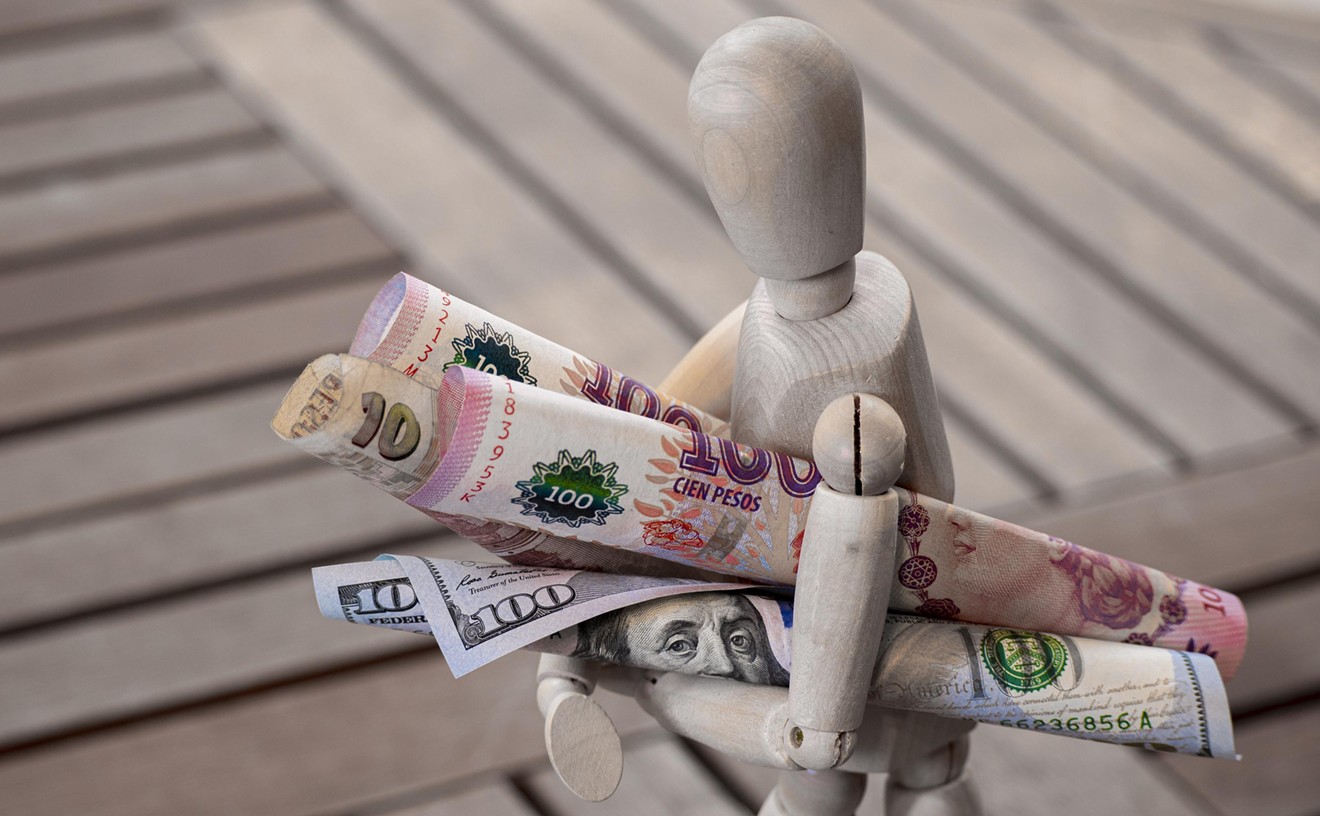
EXCLUSIVE: Miami Played Host to $350 Million Argentinian Money-Laundering Scheme, Feds Say
By Izzy Kapnick
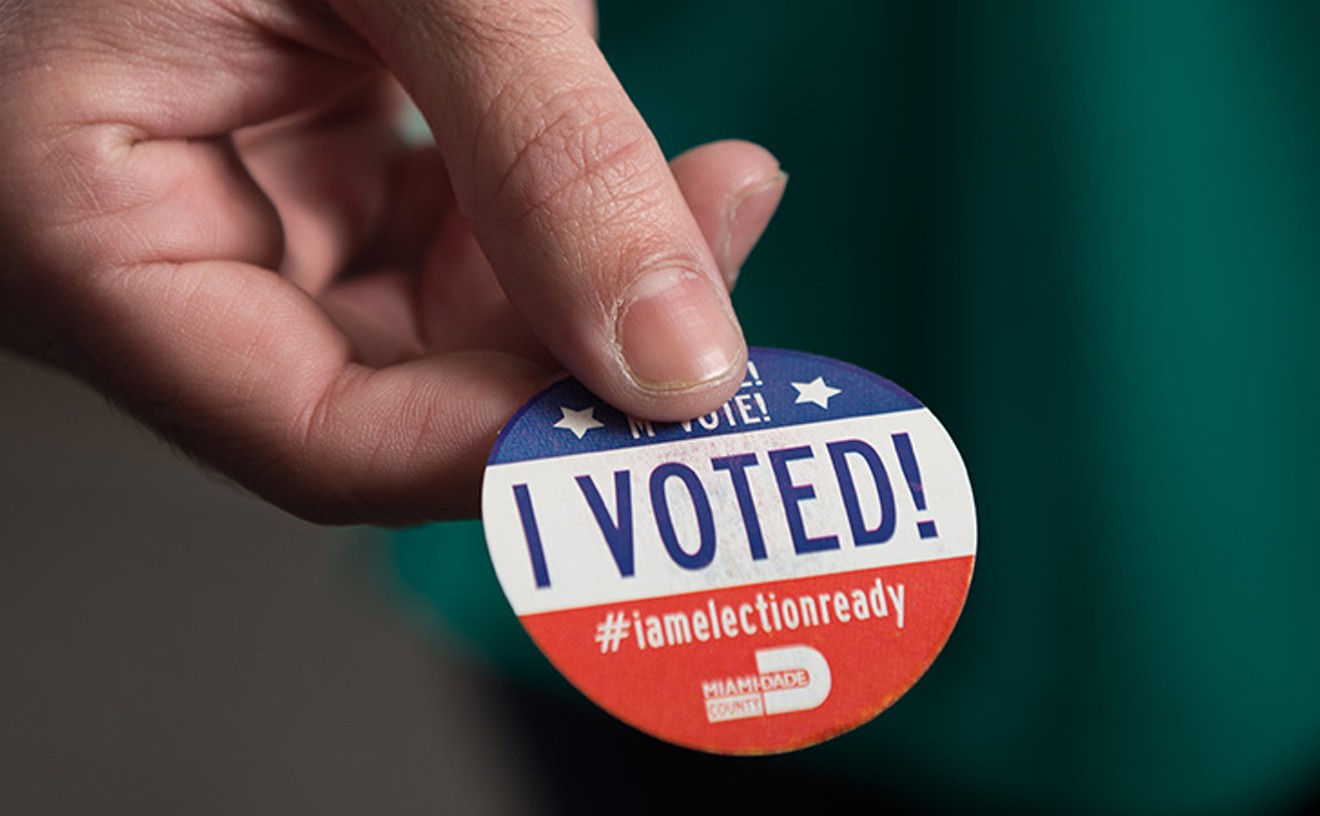
No Mo' Shlomo, New Dawn in Pembroke: South Florida Municipal Election Winners and Losers
By Alex DeLuca

''Legislating Values"? Florida to Raise Minimum Age for Strippers
By Naomi Feinstein

Urine Trouble: Lawsuit Claims Florida Hospital Served Urine Instead of Soup
- View This Week's Print Issue
- Food & Drink
- Arts & Culture
- Things To Do
- New Times Events
- Advertise With Us
- Privacy Policy
- Terms of Use
- Voice Media Group
- Dallas Observer
- Denver Westword
- New Times Broward-Palm Beach
- Phoenix New Times
- V Audience Labs
- V Digital Services

- PHARMACEUTICAL
- TRANSPORTATION
- MORE INDUSTRIES
- PRODUCT LIABILITY
- MORE PRACTICE AREAS
- MASSACHUSETTS
- MORE STATES

$2M+ Wrongful Death Trial Begins Over Drowning Of Champion Powerboat Racer
Posted by David Siegel on Jan 13, 2015 3:17:00 PM
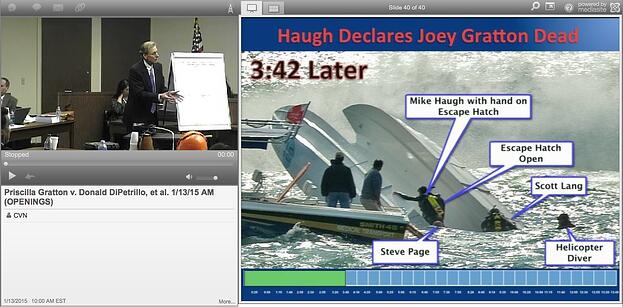
Plaintiff's attorney Gregory Barnhart shows jurors a photo of rescuers attempting to free Joey Gratton from his overturned racing boat. Click here to watch live via CVN. Click here for a copy of the complaint.
Fort Lauderdale - A Florida state court jury heard opening statements Tuesday in a wrongful death suit worth at least $2 million brought by the widow of champion powerboat racer Joey Gratton against Super Boat International Productions Inc., alleging rescue crews failed to pull Gratton from the water fast enough after his boat overturned.
Priscilla Gratton’s suit accuses SBI president John Carbonell and other organizers of the Key West World Championships of being negligent by failing to ensure properly trained rescue divers were able to quickly reach Gratton’s boat and for allegedly delaying rescue efforts by not immediately stopping the race after the 2011 accident.
Gregory Barnhart of Searcy Denney Scarola Barnhart & Shipley PA, representing Gratton, told the jury that special helicopter-deployed divers known as “angels” should have been able to retrieve Gratton, 59, from his sinking boat more quickly, according to a Courtroom View Network webcast of the proceedings. Instead, Barnhart said race organizers deployed Mike Haugh, a diver with no specialized rescue training who worked professionally as a tattoo artist.
"Time is critical,” Barnhart told jurors while describing the allegedly botched rescue effort as the cockpit of Gratton’s boat filled with water over the course of nearly 10 minutes. “This is not like returning a library book. Seconds count."
Barnhart said Haugh and other rescuers were unfamiliar with the design of Gratton’s boat, and that Haugh failed to immediately provide oxygen to Gratton once gaining access to the boat’s interior.
Gratton’s boat flipped over while making a sharp turn, Barnhart said. Gratton, the racing boat’s throttle operator, survived the initial accident but was allegedly unable to release his restraint harness, and Barnhart told the jury that the poorly coordinated rescue effort by undertrained personnel caused Gratton’s death. The boat’s pilot, Steve Page, escaped with minor injuries.
Barnhart told jurors the decision by Carbonell not to immediately halt the race after the accident also contributed to Gratton’s death, because it hindered the ability of rescue boats to safely reach the accident site, and that waves created by other racing boats caused water to spill into the escape hatch on Gratton’s boat.
“It’s [Carbonell’s] policy even if a boat rolls over, even if the lives of racers are in danger, he keeps [the race] going,” Barnhart said.
While he didn’t ask for a specific amount of damages for pain and suffering during his opening statements, Barnhart told jurors that economic loss damages alone could be as high as $1.9 million.
Gratton’s death was one of three during the 2011 high-speed race. Jeffrey Tillman and Robert Morgan also died after their boat overturned, and Tillman’s uncle has filed a similar wrongful death suit against SBI officials citing the lack of properly trained rescue teams. William Tillman is represented by William R. Scherer of Conrad & Scherer LLP, and the case is still pending according to court records.
During his comparatively brief opening statement on behalf of the defendants, William B. Milliken of Hayden Milliken & Boeringer PA described powerboat race participants as wealthy thrillseekers who know the risks of their chosen sport.
Milliken said the fact Haugh wasn’t trained as a paramedic, firefighter or emergency medical technician was irrelevant, because only his skills as a diver mattered in the moments following the accident. Milliken said rescuers were blocked from immediately entering through the escape hatch while Gratton’s partner exited the boat, and that there were problems opening the boat’s canopy.
“This rescue team did everything they could, everything humanly possible to extract Joey, and unfortunately they do not extract him before he drowns,” Milliken told the jury. “But that does not mean that they’re liable or they did anything wrong.”
Milliken disputed the amount of economic loss damages requested by Barnhart, citing the fact that Gratton had retired and his potential future income was limited.
“This obviously is a tragic case. You have a man that lost his life,” Milliken said. “As triers of fact you have to make a decision based upon the evidence and the facts that you hear whether any of the defendants are responsible.”
The trial before Judge Carlos Rodriguez is expected to last up to three weeks.
Attorneys for the plaintiff and a representative for Super Boat International did not respond to a request for comment from CVN.
Priscilla Gratton is represented by Michael D. Allweiss of Allweiss & Allweiss and by F. Gregory Barnhart of Searcy Denney Scarola Barnhart & Shipley.
The defendants are represented by William B. Milliken of Hayden Milliken & Boeringer PA and by Albert L. Kelley of Albert L. Kelley PA.
The case is Priscilla Gratton v. Donald DiPetrillo, et al., case number CACE12004442, in Broward County’s 17th Judicial Circuit Court.
Topics: Negligence , Florida
RECENT POSTS
Slip-and-fall trial begins over pothole in walmart parking lot, watch online via cvn, gasket manufacturer faces trial over maintenance worker’s mesothelioma death - watch online via cvn, |video| shane read outlines how keith mitnik reframed defense surveillance video to win $2.8m verdict in crash case, tesla hit with $60.8m motorcycle crash verdict in zero-offer trial, watch gavel-to-gavel via cvn, florida jury deadlocks in j&j ovarian cancer talc trial.

Storytellers: Lloyd Bell and the Power of Performance
Who served up the key to an $11m tbi verdict against papa john's, the science behind winning talc powder trials.

Courtroom View Network
Want to stay updated? Join our newsletter!
Appeals court orders inquiry into claims of juror bias in Boston Marathon bomber’s case
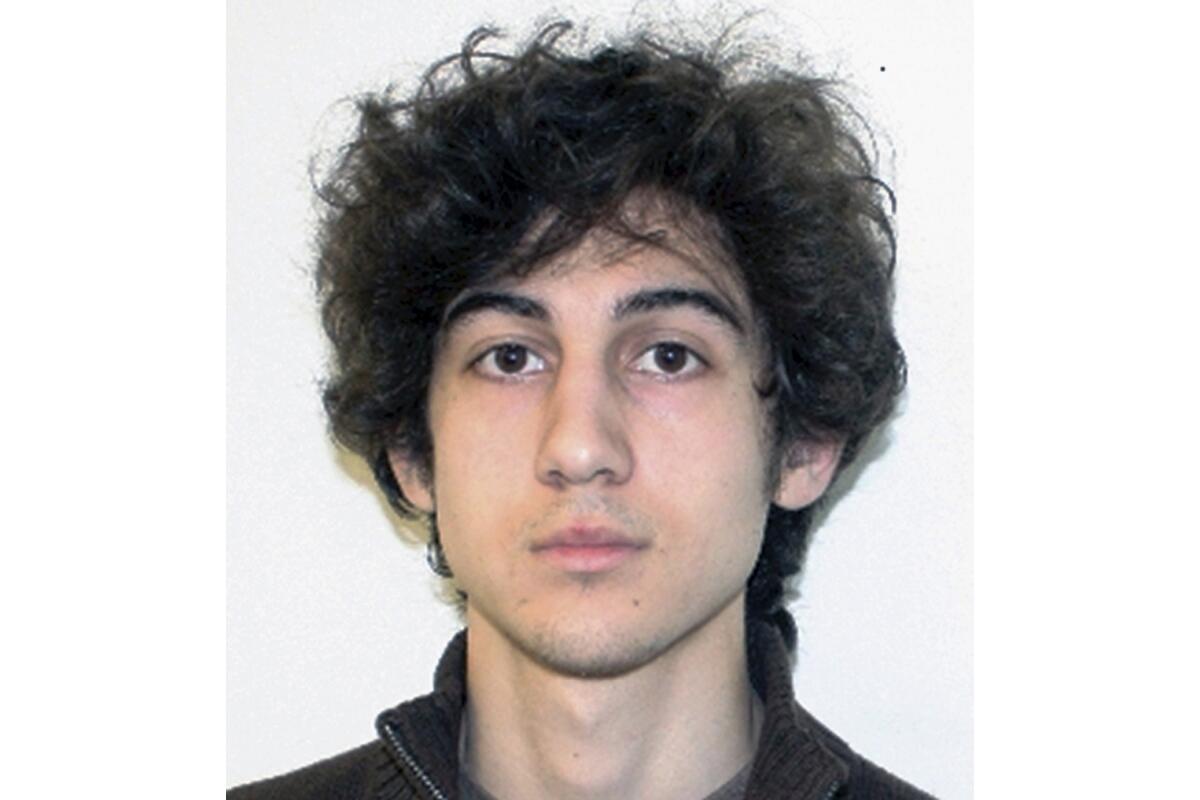
- Show more sharing options
- Copy Link URL Copied!
A federal appeals court on Thursday ordered the judge who oversaw Boston Marathon bomber Dzhokhar Tsarnaev ‘s trial to investigate the defense’s claims of juror bias and determine whether his death sentence should stand.
A three-judge panel of the Boston-based 1st U.S. Circuit Court of Appeals did not throw out Tsarnaev’s death sentence. Defense lawyers had pushed for that while claiming bias by two people who sat on the jury that convicted him for his role in the bombing that killed three people and injured hundreds near the marathon’s finish line in 2013.
But the appeals court found that the trial judge did not adequately investigate Tsarnaev’s allegations, and sent the case back to the judge for a new investigation. If the judge finds that either juror should have been disqualified, he should vacate Tsarnaev’s sentence and hold a new penalty-phase trial to determine whether Tsarnaev should be sentenced to death, the appeals court said.
“And even then, we once again emphasize that the only question in any such proceeding will be whether Tsarnaev will face execution; regardless of the outcome, he will spend the rest of his life in prison,” it said.
The U.S. attorney’s office in Massachusetts declined to comment Thursday. The Justice Department can either ask the full 1st Circuit to hear the matter or go to the U.S. Supreme Court. Lawyers for Tsarnaev didn’t immediately respond to emails seeking comment on the decision.
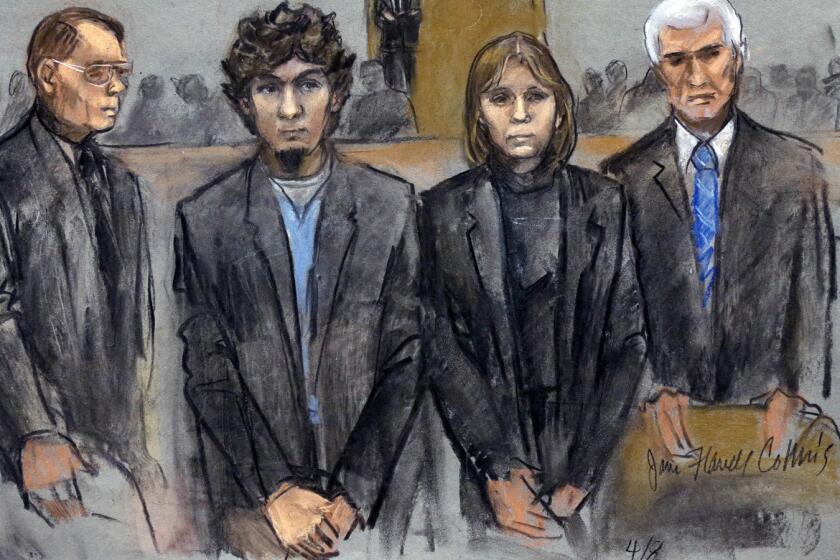
World & Nation
Death sentence for Dzhokhar Tsarnaev brings relief to many in Boston
Convicted Boston Marathon bomber Dzhokhar Tsarnaev must pay with his life for the suffering he unleashed at the race finish line two years ago, a federal jury decided Friday, delivering a major victory to the government in the biggest U.S. terrorism prosecution of the post-Sept. 11 era.
May 15, 2015
It’s the latest twist in the long-running case, which has already been argued in front of the U.S. Supreme Court once. The high court in 2022 reinstated the death sentence imposed on 30-year-old Tsarnaev after the 1st Circuit threw out the sentence in 2020. The circuit court found then that the trial judge did not sufficiently question jurors about their exposure to extensive news coverage of the bombing. The Supreme Court justices voted 6 to 3 in 2022 when they ruled that the 1st Circuit’s decision was wrong.
The 1st Circuit took another look at the case after Tsarnaev’s lawyers urged it to examine issues the Supreme Court didn’t consider. Among them was whether the trial judge wrongly forced the proceeding to be held in Boston and wrongly denied the defense’s challenges to seating two jurors it says lied during questioning.
Despite a moratorium on federal executions imposed by Atty. Gen. Merrick Garland, the Justice Department has continued to push to uphold the death sentence in Tsarnaev’s case. The moratorium came after the Trump administration put to death 13 inmates in its final six months.
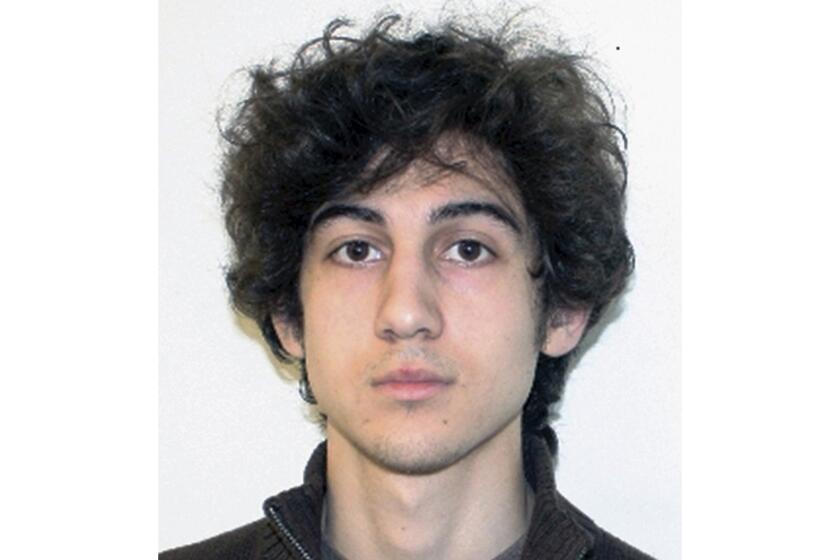
Supreme Court reinstates Boston Marathon bomber’s death sentence
The high court agreed with the Biden administration’s argument that an appeals court was wrong to throw out Dzhokhar Tsarnaev’s death sentence.
March 4, 2022
Oral arguments before the three-judge 1st Circuit panel more than a year ago focused on two jurors who Tsarnaev’s lawyers say were dishonest during the lengthy jury selection process.
One of them said she had not commented about the case online, but she had retweeted a post calling Tsarnaev a “piece of garbage.” Another juror said none of his Facebook friends had commented on the trial, even though one had urged him to “play the part” so he could get on the jury and send Tsarnaev to “jail where he will be taken care of,” defense attorneys say. Tsarnaev’s lawyers raised those concerns during jury selection, but say the judge chose to not look into them further.
William Glaser, a Justice Department lawyer, acknowledged during oral arguments before the 1st Circuit appeals court that the jurors made inaccurate statements, but said other disclosures suggested they misremembered rather than lied. He argued that the trial judge did nothing wrong.
The appeals court said there are potentially “innocuous” explanations for the jurors’ conduct, including forgetting about their social media posts or misunderstooding the judge’s questions. But the trial judge’s “error was in failing to conduct an inquiry sufficient to rule out the more pernicious explanations,” the appeals court said.
The appeals court panel voted 2 to 1 in favor of sending the case back down for more investigation into the jurors. Those who supported the idea were Judges William Kayatta Jr. and O. Rogeriee Thompson, who were both nominated to the court by President Obama.
Judge Jeffrey Howard, who was nominated by President George W. Bush, dissented, writing that there was “ample basis for the district court to arrive at the judgment that the two jurors in question were not improperly biased.”
Tsarnaev’s guilt in the deaths of Lingzi Lu, a 23-year-old Boston University graduate student from China; Krystle Campbell, a 29-year-old restaurant manager from Medford, Mass.; and 8-year-old Martin Richard of Boston was not at issue in the appeal, only whether he should be put to death or imprisoned for life.
Defense lawyers argued that Tsarnaev had fallen under the influence of his older brother, Tamerlan, who died in a gun battle with police a few days after the April 15, 2013, bombing.
Tsarnaev was convicted of all 30 charges against him, including conspiracy and use of a weapon of mass destruction and the killing of Massachusetts Institute of Technology Police Officer Sean Collier during the Tsarnaev brothers’ getaway attempt.
Prosecutors told jurors that the men carried out the attack to punish the United States for its wars in Muslim countries. In the boat where Tsarnaev was found hiding, he had scrawled a confession that referred to the wars and wrote, among other things, “Stop killing our innocent people and we will stop.”
Richer writes for the Associated Press.
More to Read
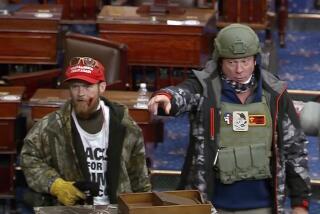
Appeals court ruling that vacates Capitol rioter’s sentence could impact dozens of Jan. 6 cases
March 1, 2024

Trump asks Supreme Court to put off his election interference trial, claiming immunity
Feb. 12, 2024

Editorial: Buffalo mass killer should not be executed. What happened to Biden’s promise?
Jan. 16, 2024
Start your day right
Sign up for Essential California for news, features and recommendations from the L.A. Times and beyond in your inbox six days a week.
You may occasionally receive promotional content from the Los Angeles Times.
More From the Los Angeles Times

Column: Biden’s big speech didn’t move the needle, nor have rising wages. But these 3 things might

Vietnam president’s resignation raises concern about nation’s stability amid fast-growing economy
March 21, 2024

Trump’s invite to major donors prioritizes the committee paying his legal bills over the RNC

Indicted Sen. Menendez is skipping Democratic primary — but won’t be counted out just yet
- Mark Forums Read
- View Site Leaders
- Thanks / Like Statistics
- Hottest Threads / Posts
- Event Calendar
- What's New?
- Advanced Search

- Serious Talk
- On The Dock
- Kramer trying to get exonerated for Aronow killing.
- If this is your first visit, be sure to check out the FAQ by clicking the link above. You may have to register before you can post: click the register link above to proceed. To start viewing messages, select the forum that you want to visit from the selection below.
Thread: Kramer trying to get exonerated for Aronow killing.

- Jump to page:
Thread Tools
- Show Printable Version
- Subscribe to this Thread…

- View Profile
- View Forum Posts
- View Blog Entries
- View Articles
Benjamin Barry Kramer, the flashy South Florida powerboat racer convicted of ordering the notorious 1987 murder of business rival Don Aronow, is claiming that authorities sent him to prison knowing that the triggerman had cleared him of involvement in the slaying. His proof: a purported February 2009 deathbed confession by triggerman Robert "Bobby'' Young in which the killer claimed he told police and prosecutors in 1995 that Colombian drug dealers actually ordered Aronow's assassination. Kramer, who pleaded "no contest'' to manslaughter in 1996 in exchange for 19 years in prison, is asking Miami-Dade Circuit Judge Dava Tunis to throw out his conviction. A preliminary hearing is set for Friday. But one of the lead homicide detectives on the case on Tuesday called Kramer's claim "complete, unadulterated b---s---.'' Kramer has already finished the 19-year state sentence for Aronow's killing, but his lawyer suggested the move could somehow help reduce Kramer's separate federal life sentence for money laundering. ``Ben Kramer seeks vindication based on actual innocence. It may materially impact other matters as well,'' one of his lawyers, Benson Weintraub, said in a statement. A millionaire powerboat builder, Aronow was gunned down in February 1987 outside his USA Racing office in the 3000 block of Northeast 188th Street. Prosecutors alleged that Kramer ordered Aronow's assassination in a business dispute. Young, a ruthless convicted killer, kidnapper and cocaine trafficker, admitted to authorities that he gunned down Aronow. He pleaded ``no contest'' to second-degree murder in 1995 and was sentenced to 19 years, but his plea deal did not require him to identify who had hired him for the hit. Young died in prison last year of natural causes. But before that, according to Kramer's attorneys, Young called them to say he had long ago cleared Kramer in a meeting with prosecutors and police shortly after taking his plea. ``I told prosecutors and police detectives that I had been hired by Colombian cocaine dealers to kill Donald Aronow,'' according to Young's statement filed by Kramer's attorneys. ``I also furnished the prosecutors and police detectives with the names of two Colombian cocaine dealers.'' Young's deathbed statement was taken by defense lawyer Kenneth Kukec, who represented Kramer along with Jose Quiñon. According to Kramer's motion, he only took the manslaughter plea to get out of squalid conditions at the Dade County Jail. Kramer claims that neither he nor his lawyers were ever notified that Young had fingered Colombians for the hit. If true, the law would have required disclosure from prosecutors of such exculpatory evidence to the defense. Former Miami-Dade police homicide Detective Greg Smith, who sat in on the debriefing with Young, denied the gunman ever cleared Kramer or named Colombians as the masterminds of the Aronow hit. ``He never implicated anybody,'' Smith scoffed. ``He said he wasn't a rat.'' One of Young's lawyers, Kayo Morgan, famously echoed his client in 1995: ``Bobby is not a rat. He is not a cheese-eater.'' Miami-Dade prosecutor Gary Winston, who handled the case then, said he could not comment because he had not seen Kramer's motion. The state's case against Kramer relied on testimony of two jailhouse informants and a disgraced lawyer who had learned of Kramer's involvement, as well as incriminating phone calls from Kramer recorded in federal prison. Kramer is also notorious for his storied attempt to escape from prison. In 1990, he tried fleeing the Federal Correctional Institution in South Miami-Dade in a helicopter, but failed when the copter crashed. Read more: http://www.miamiherald.com/2010/03/2...#ixzz0j5e03ngn Copyright © 2010, South Florida Sun-Sent
Interesting stuff! It would be cool to know if Bobby really did finger the Columbians or not. That sure would re-write history.
I guess Ben has the time to try this. It's not like it could get any worse.
Originally Posted by DollaBill free ben Sure, I'm in . Is shipping extra?
- Visit Homepage
He's where he belongs...rotting away.
[email protected] www.elitemarineonline.com - Livorsi,CP,Lifeline,CMI,Box Anchor & more!
If he gets out do we make him a charter member?
Originally Posted by Expensive Date If he gets out do we make him a charter member? Icon
Ummm, so let me get this straight, kramers lawyers claim they were given a death bed confession? How convenient. Good luck with that! There's so many details of this case that confirm kramer was behind the murder it's almost humorious he's now claiming he's innocent.
Making the best in the industry BETTER since 1990...LIP-SHIP Performance: 305-933-9988 2010 Desert Storm Poker Run extravaganza - 04/22 through 4/25 Lake Havasu, Az.
It could be true, but there are too many people that don't want him to ever see the light of day.
19 years for killing someone Life for money laundering.... anyone see something wrong with this picture?
Originally Posted by htrdlncn 19 years for killing someone Life for money laundering.... anyone see something wrong with this picture? Nothing new there. It's always been that way. Kill an ordinary guy and have a bad lawyer, do some time. Good lawyer, do a little. But steal money? And if you're stupid enough to try to cheat the government out of money? You're screwed.
Originally Posted by htrdlncn 19 years for killing someone Life for money laundering.... anyone see something wrong with this picture? i was just wondering that exact same thing . . . wtf?
Throttles- Cleveland Construction/Traffic Light Racing 377 Talon cat
Originally Posted by htrdlncn 19 years for killing someone Life for money laundering.... anyone see something wrong with this picture? Ya. But it's easy to understand the government's position: Which crime hurts the government more? What's a life worth compared to lost Tax Revenue?
Originally Posted by DollaBill free ben

Somewhere in Illinois, cashbrain's got a hard-on thinking about how much $$$ he can make by selling some T-Shirts. I always thought that Kramer was doing life under the drug kingpin charge of life with no possibility of parole. Something about getting caught with 550 tons of weed on a ship???????
Originally Posted by OldSchool Somewhere in Illinois, cashbrain's got a hard-on thinking about how much $$$ he can make by selling some T-Shirts. I always thought that Kramer was doing life under the drug kingpin charge of life with no possibility of parole. Something about getting caught with 550 tons of weed on a ship??????? RICO statue for running a continuous smuggling enterprise was what I thought finally got him in conjunction with IRS issues.
Originally Posted by Tank Ummm, so let me get this straight, kramers lawyers claim they were given a death bed confession? How convenient. Good luck with that! There's so many details of this case that confirm kramer was behind the murder it's almost humorious he's now claiming he's innocent. Ever read Speed Kills? Makes you wonder because there were so many players in this whole mess
Originally Posted by cowisl Ever read Speed Kills? Makes you wonder because there were so many players in this whole mess Yea, I read it. I actually lent my copy to the producer that has the copy right to do the Don Aronow movie. I know it is very convoluted. There's just a few details that stick out like a sore thumb and point in the direction he was guilty as all hell. Seems many involved after the fact and have given their opininions have agendas. I tend to believe the interviews and statements of the investigating officer. He seems to be a no bullsh!t type of guy and really had nothing to gain or lose by getting kramer to confess. Nice to close a case and all and I've heard the story's of pressure by locals to solve the murder, but it had been sitting stagnent for many years prior. Case pretty much died out. Regardless, "free Kramer"? I don't get it. OJ Simpson was once a beloved sports icon as well, I don't hear many yelling free OJ...And he was found not guilty of murder and pleaded not guilty to robbery. Guess I'm old fasioned....I like my drug smuggling, money laundering, confessed to murdering criminals in custody where they should be.
Originally Posted by Tank Yea, I read it. I actually lent my copy to the producer that has the copy right to do the Don Aronow movie. I know it is very convoluted. There's just a few details that stick out like a sore thumb and point in the direction he was guilty as all hell. Seems many involved after the fact and have given their opininions have agendas. I tend to believe the interviews and statements of the investigating officer. He seems to be a no bullsh!t type of guy and really had nothing to gain or lose by getting kramer to confess. Nice to close a case and all and I've heard the story's of pressure by locals to solve the murder, but it had been sitting stagnent for many years prior. Case pretty much died out. Regardless, "free Kramer"? I don't get it. OJ Simpson was once a beloved sports icon as well. However, I like my drug smuggling, money laundering, confessed to murdering criminals in custody where they should be. I agree. If you ever get bored, do some searches on George Morales. Interesting to say the least
- Private Messages
- Subscriptions
- Who's Online
- Search Forums
- Forums Home
- Rooster Tales
- Historic & Classic Offshore
- Inside the Sport
- Upcoming Events
- Toys & Hobbies
- The Good, The Bad & The Ugly
- West Michigan Offshore
- Chicago Powerboat Club
- Florida Powerboat Club (FPC)
- Ft Myers Offshore
- LOTO / Grand / E-Dock
- Performance Boat Club of Canada
- Engine Tech
- Driveline Tech
- Painting & Fiberglass
- Boating Safety, Insurance, Finance & Seamanship
- Trailers & Towing Discussion
- Truck & Automotive Discussion
- General Offshore Racing
- World Speed Records
- Powerboat P1
- Pete B's 'Shoot 2 Thrill Pix'
- Lucididee Fast Boats
- Freeze Frame Video
- Want to Buy
- The Showroom
- Active Thunder
- Banana Boat
- Black Thunder
- Chris Craft
- Doug Wright
- It's A What?
- Outerlimits
- Forum Issues & Discussion
- Membership Information

Posting Permissions
- You may not post new threads
- You may not post replies
- You may not post attachments
- You may not edit your posts
- BB code is On
- Smilies are On
- [IMG] code is On
- [VIDEO] code is On
- HTML code is Off
Forum Rules
Morning Rundown: Ohtani scandal comes at a pivotal moment, Gazan support for a two-state solution rises, and rare disorder causes man to see ‘demonic’ faces
Georgia plans to put to death a man in the state's first execution in more than 4 years
ATLANTA — A Georgia man convicted of killing his former girlfriend three decades ago is scheduled to be put to death Wednesday in what would be the state’s first execution in more than four years .
Willie James Pye, 59, was convicted of murder and other crimes in the November 1993 killing of Alicia Lynn Yarbrough. The planned lethal injection using the sedative pentobarbital is set to happen at 7 p.m. at the state prison in Jackson.
In their request for clemency, Pye’s lawyers called the 1996 trial “a shocking relic of the past” and said the local public defender system had severe shortcomings in the 1990s.
The failures of the local justice system had the effect of “turning accused defendants into convicted felons with all the efficiency of Henry Ford’s assembly line,” Pye’s defense lawyers wrote in their clemency application.
“Had defense counsel not abdicated his role, the jurors would have learned that Mr. Pye is intellectually disabled and has an IQ of 68,” they said, citing the findings of the state’s expert.
Defendants who are intellectually disabled are ineligible for execution. Experts said that Pye meets the criteria, but that the burden of proof in Georgia was too high to reach, his lawyers argued.
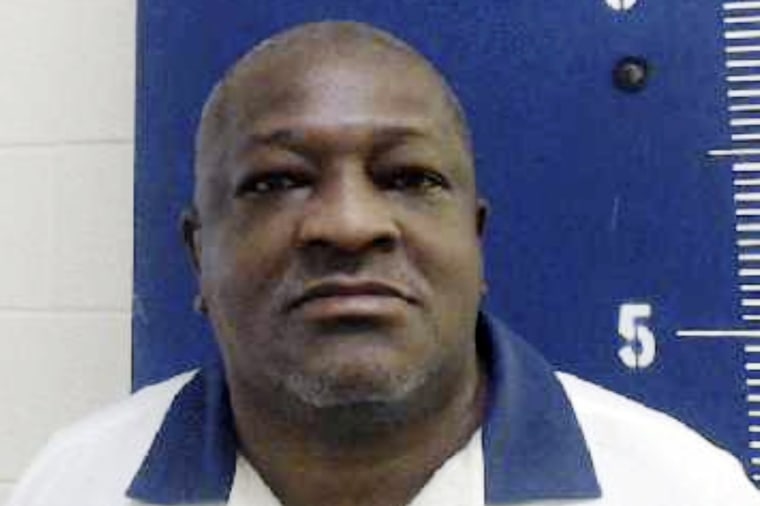
“They also would have learned the challenges he faced from birth — profound poverty, neglect, constant violence and chaos in his family home — foreclosed the possibility of healthy development,” they wrote. “This is precisely the kind of evidence that supports a life sentence verdict.”
But the Georgia Parole Board rejected those arguments after a closed-door meeting on Tuesday, and denied Pye’s bid for clemency.
Pye had been in an on-and-off romantic relationship with Yarbrough, but at the time she was killed Yarbrough was living with another man. Pye, Chester Adams and a 15-year-old had planned to rob that man and bought a handgun before heading to a party in a nearby town, prosecutors have said.
The trio left the party around midnight and went to the house where Yarbrough lived, finding her alone with her baby. They forced their way into the house, stole a ring and necklace from Yarbrough and forced her to come with them, leaving the baby alone, prosecutors have said.
The group drove to a motel, where they raped Yarbrough and then left the motel with her in the car, prosecutors said. They turned onto a dirt road and Pye ordered Yarbrough out of the car, made her lie face down and shot her three times, according to court filings.
Yarbrough’s body was found on Nov. 17, 1993, a few hours after she was killed. Pye, Adams and the teenager were quickly arrested. Pye and Adams denied knowing anything about Yarbrough’s death, but the teenager confessed and implicated the other two.
The teenager reached a plea agreement with prosecutors and was the main witness at Pye’s trial. A jury in June 1996 found Pye guilty of murder, kidnapping, armed robbery, rape and burglary, and sentenced him to death.
Pye’s lawyers have argued in court filings that prosecutors relied heavily on the teenager’s testimony but that he later gave inconsistent statements. Such statements, as well as Pye’s testimony during trial, indicate that Yarbrough left the home willingly and went to the motel to trade sex for drugs, the lawyers said in court filings.
Lawyers representing Pye also wrote in court filings that their client was raised in extreme poverty in a home without indoor plumbing or access to sufficient food, shoes or clothing. His childhood was characterized by neglect and abuse by family members who were often drunk, his lawyers wrote.
His lawyers also argued that Pye suffered from frontal lobe brain damage, potentially caused by fetal alcohol syndrome, which harmed his planning ability and impulse control.
Pye’s lawyers had long argued in courts that he should be resentenced because his trial lawyer didn’t adequately prepare for the sentencing phase of his trial. His legal team argued that the original trial attorney failed to do a sufficient investigation into his “life, background, physical and psychiatric health” to present mitigating evidence to the jury during sentencing.
A federal judge rejected those claims, but a three-judge panel of the 11th U.S. Circuit Court of Appeals agreed with Pye’s lawyers in April 2021. But then the case was reheard by the full federal appeals court, which overturned the panel ruling in October 2022.
Pye’s co-defendant Adams, now 55, pleaded guilty in April 1997 to charges of malice murder, kidnapping with bodily injury, armed robbery, rape and aggravated sodomy. He got five consecutive life prison sentences and remains behind bars.
Pye is scheduled to be the first person executed in Georgia since January 2020 .
The Associated Press

When is the US election? Everything you need to know about the 2024 race
When is the next us election, what are the key battleground states, what happens on election day, what is the electoral college, what are the polls showing, what about independents, us congressional elections: who else is running in 2024, can trump run if indicted or convicted.
- How did parties choose their candidates?
The 2024 US election is all but certain to be a rematch between president Joe Biden and Donald Trump after both proved dominant in their primaries.
Immigration , abortion , age and threats to democracy itself are likely to dominate a bitterly-fought race for the White House.
Battleground states, or swing states, are predicted to play a key role in what is likely to be an extremely tight vote.
The US election day will be held on Tuesday, Nov 5 2024.
The winner will serve four years in the White House starting from their inauguration on Jan 20 2025.
Voters will be electing not just a president, but Congressional candidates for seats in the House of Representatives and the US Senate.
The road to the White House effectively runs through a few critical battleground states , which play an outsized role on election day.
The states are typically divided, and flip between Democrat and Republican with a narrow margin of victory.
Pennsylvania, and its 19 electoral college votes, has proved to be a critical state in the last few presidential elections, and 2024 is no different.
Mr Trump, or any other Republican candidate, will also have to flip Arizona, Georgia, Wisconsin and Nevada, which Mr Biden narrowly carried in 2020 to win the presidency.
Florida and Ohio, once considered marginal, have been safe Republican territory in recent elections. However, nothing is set in stone.
The majority of voters go to the polls and ballots are counted. Many people may have already cast their vote ahead of time using the postal voting system or early voting.
Votes are counted in each state after their respective polls close. Poll close times vary from state to state but generally begin from around 7pm local time.
The range of time zones across the US means that on the east coast, ballots will have been tabulated while voters in states like Alaska and Hawaii are still making their way to the polls.
The winner of the election will likely not be projected for days. Even then, the results are not properly finalised for months. However, states and the whole election result are typically “called” long before final votes are counted.
While voters in the general election are in theory selecting their choice for president, in reality, they are choosing delegates for the electoral college.
All 50 US states and Washington DC have a set number of electors in the electoral college, roughly proportional to the population size of the state.
All but two states, Maine and Nebraska, use a winner-takes-all system - which means that if a candidate wins the most votes in a state, they take its entire haul of electoral college votes.
In order to become president, either candidate needs to win a majority of the 538 electors in the electoral college - so 270.
Critics have questioned the electoral college system because it does not guarantee the most popular candidate gets to the White House.
For example, in 2016 Hillary Clinton won 48.2 per cent of all votes across the US and Mr Trump 46.1 per cent. But as he won more states, sometimes by a narrow margin, he was elected president.
The 2024 election will be the first since the 2020 census changed the make-up of the electoral college to adapt to shifting population sizes in each state.
Texas has gained two electoral votes, while Colorado, Florida, Montana, North Carolina, and Oregon each gained one. California, Illinois, Michigan, New York, Ohio, Pennsylvania, and West Virginia each lost one.
Recent polls suggested Mr Trump is leading Mr Biden in a number of critical states, causing alarm among Democrats.
But while both candidates easily won their primaries, they remain largely unpopular among the whole electorate, with generally low approval ratings.
Mr Biden’s critics say the Democrat president is too old to seek a second term which would end in his 86th year. His son is also mired in scandal over his business deals.
Mr Trump, who will be 78 when voters go to the polls, is facing 91 criminal counts across four indictments with several cases expected to go to trial during the height of the election campaign.
The recent primary elections showed Mr Trump underperforming compared with early polling, while Mr Biden was damaged by Democrat voters marking “uncommitted” as a protest over his handling of the war in Gaza .
There are currently three independent candidates running for the White House.
They are not affiliated with Republicans or Democrats and could draw votes away from the main parties.
They include Robert Kennedy Jr , an anti-vax former Democrat from the Kennedy dynasty, who has veered to the Right and may eat into Mr Trump’s support. He is polling unusually high for an independent.
The other two, Jill Stein, a green candidate, and Cornel West, a Left-leaning progressive, are likely to steal votes from the Democrat base.
The general election will also decide control of Congress, which is made up of the House of Representatives and the Senate.
Currently, the Republicans control the House of Representatives by a small majority (currently 221 - 213) and Democrats control the Senate by an even more razor thin margin (51-49).
Polls suggest control of both chambers could flip in 2024.
Members of the House serve two-year terms and every single seat in the chamber will be on the ballot in 2024.
Senators, however, serve six-year terms and elections to the senate are staggered so that only about a third of the chamber is up for re-election.
Democrats need a net gain of just five seats to claim the House.
Meanwhile, Republicans have high hopes of seizing the Senate since the electoral map is so favourable to them this cycle. The GOP needs just two more seats to gain the majority.
In practice, yes. The Constitution does not bar a natural-born citizen over 35 from running for the White House.
The former president has insisted that he will continue his campaign even if convicted and sentenced on any of the 91 criminal counts he has been indicted over.
There is historical precedent. In 1920, Eugene Debs ran for president on behalf of the Socialist Party despite serving 10 years for three counts of violating the Espionage and Sedition Acts.
He even ran his campaign from his prison cell at the Atlanta Federal Penitentiary, with the authorities allowing him to issue a weekly political statement to the press.
The only caveat standing in Mr Trump’s way was also overturned in a unanimous Supreme Court decision. The 14th Amendment, passed after the Civil War, contains a clause barring anyone who “engaged in insurrection” from office.
Campaigners in various states had resurrected the amendment in an attempt to have Mr Trump removed from the election ballot, before it was quashed by the court ahead of Super Tuesday.
However, in the eyes of many political pundits, a serious conviction is likely to damage Mr Trump’s reputation, and subsequently his electability.
Even veteran Republican insiders admit they are very unsure of how a conviction would affect Mr Trump’s campaign. As they point out, the indictment of the former president has plunged the US into uncharted waters.
How did the parties choose their candidates?
In the first stage of the 2024 elections the two main political parties selected their presidential candidates through either primary elections or caucuses in each state.
Primaries are regular elections to choose delegates for the party convention, where the party’s final candidate is confirmed.
Mr Trump won a landslide victory against main rivals Ron DeSantis, Vivek Ramaswamy and Nikki Haley in the first states to vote.
He faced a single opponent, Ms Haley, on Super Tuesday, when he won all states but one before she suspended her campaign the morning after results.
Despite a crushing victory, polls suggest some moderate Republicans who supported Ms Haley may not vote for Mr Trump in the presidential election, making the race for the White House tighter still.
As for Mr Biden, the president eased to victory in every race apart from American Samoa, where he drew with rank outsider Jason Palmer to share the delegates. The overseas US territory does not vote in the presidential election.
It is now all but certain that Americans will face a rematch between the two candidates come November.
This article is kept updated with the latest information for the 2024 election.
Sign up to the Front Page newsletter for free: Your essential guide to the day's agenda from The Telegraph - direct to your inbox seven days a week.

- Share full article
Advertisement
Supported by
Boat Racer in Florida Charged in Drug Case
Special to the New York Times
- Nov. 26, 1987
Benjamin Barry Kramer, an international powerboat racing champion and a builder of racing boats, was charged today in a 44-count indictment stemming from a Federal investigation into drug smuggling.
The United States Attorney here announced the indictment that charged Mr. Kramer with racketeering and income tax evasion. Five others were also indicted.
The indicments grew out of an investigation by the Drug Enforcement Administration, the Internal Revenue Service and the Customs Service into marijuana smuggling and money laundering in Britian's Isle of Man, the United States Virgin Islands and the European principality of Liechtenstein.
Mr. Kramer, who was convicted in 1978 of drug smuggling, was arrested on related Federal drug charges in August and is in custody in Illinois.
The United States Attorney accused Mr. Kramer's organization of importing large amounts of marijuana by ship into California and Florida. Also charged was Mr. Kramer's father, Jack Jerome Kramer, and Melvyn Kessler, a lawyer, who was accused of setting up foreign corporations to launder about $14 million in profits from drug sales.
Mr. Kramer won the 1986 United States Open Class Offshore Powerboat Racing Championship and the 1984 world title. He is known as a protege of Don Aronow, the designer of the Cigarette boat, used by drug smugglers and Federal drug agents alike.
Create a free profile to get unlimited access to exclusive videos, breaking news, sweepstakes, and more!
Lake of the Ozarks Realtor Allegedly Hired A Hitman To Kill Her Ex Mother-In-Law
Powerboat racer and realtor Leigh Ann Bauman is accused of attempting to orchestrate her ex mother-in-law's murder.
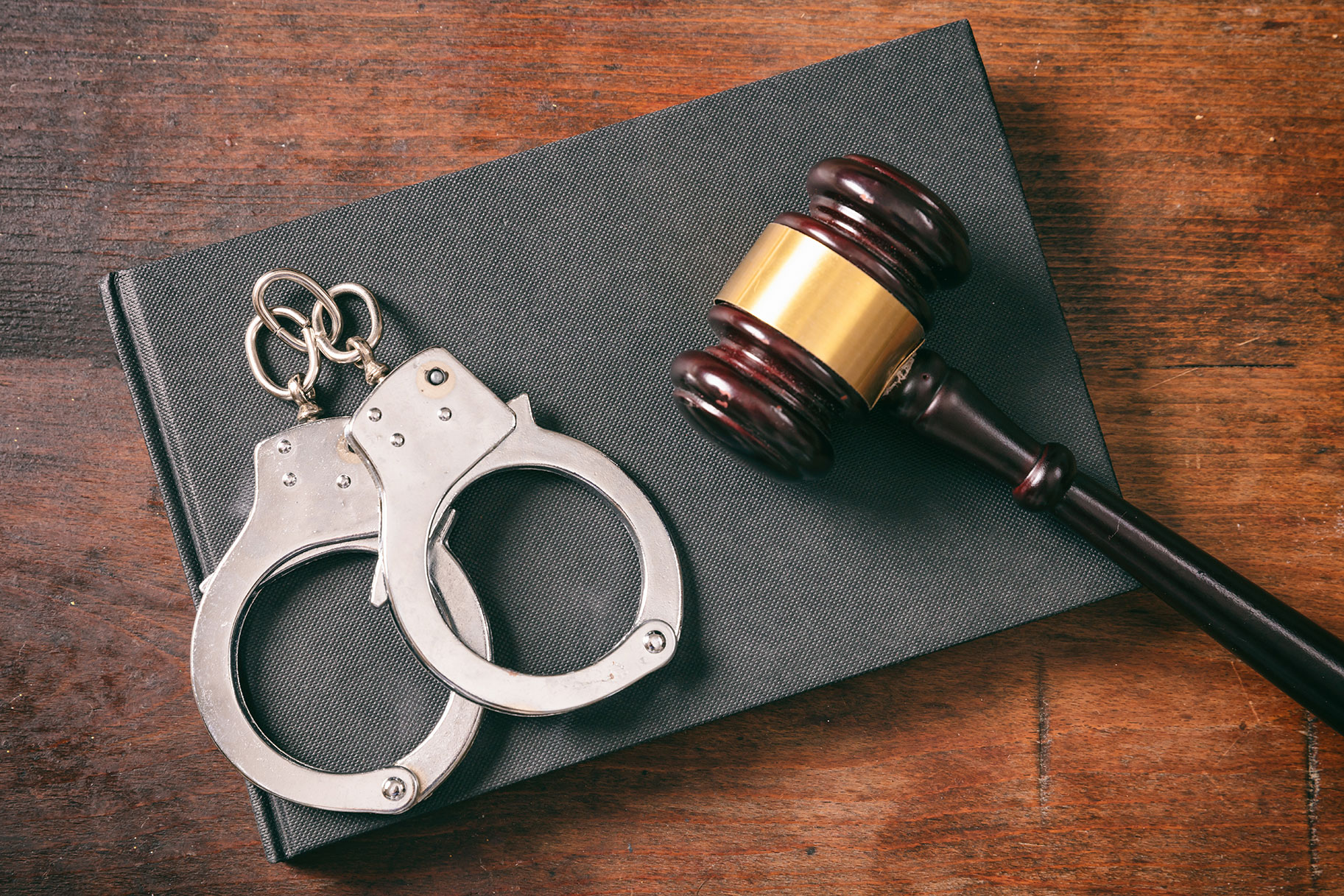
A realtor and powerboat racer in the Lake of the Ozarks is accused of attempting to hire a hitman to kill her former mother-in-law.
Leigh Ann Bauman, 44, was arrested by the Missouri State Highway Patrol in March on suspicion of conspiracy to commit murder in the first degree, local outlet LakeExpo reports. She pleaded not guilty and was released on a $400,000 bond, according to LakeExpo.
Bauman, who refers to herself as a r ealtor, artist, entrepreneur, cheer mom and “world record offshore powerboat racer” is accused of trying to get her former mom-in-law killed because Bauman felt that she was causing a rift in her relationship with her daughters, the Daily Beast reports .
She allegedly asked a friend for tips on how to hire a hitman on March 1.
Bauman allegedly told that friend that “she knew it was wrong as a Christian, but said she would go to church and ask for forgiveness after it was done,” a probable cause statement, obtained by the Daily Beast, states.
That friend soon called her own lawyer, who in turn called the police.
Bauman’s former husband filed a petition for an order of protection for himself and his children following the arrest. He accused his ex wife of making “numerous threats to destroy me, personally and professionally,” the Daily Beast reported.
“My daughters, my family and I have endured so much emotional and psychological damage from Leigh Ann Bauman’s actions over the past 15 years,” he stated in the order. “Now, her most recent actions of attempting to hire a hit man to kill my mother, have proven that she will stop at nothing if she feels/thinks/imagines someone is not doing what she wants.”
Bauman, who is well known in the Lake of the Ozarks resort community, has not immediately returned Oxygen.com’s request for comment.
Her boyfriend, Italian powerboat racer Serafino Cazzani told the Daily Beast that he feels that Bauman was “encouraged, betrayed, and entrapped” by a person “she considered a friend.”
“You’re drunk with your friend one night and say, ‘Yeah I hate my boyfriend,’” he told the outlet. “Next thing you know the friend goes to the cops and says, ‘She’s planning a murder.’”
The Daily Beast notes that Bauman’s supporters believe that the friend who turned her in did so for leverage in her own pending criminal case. The woman faces trial in September receiving stolen property.
- Breaking News
Related Stories
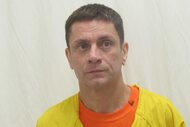
Cold Justice Assists in Conviction for Nori Jones' Murder
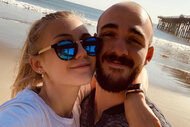
Parents of Gabby Petito, Brian Laundrie Settle Civil Lawsuit
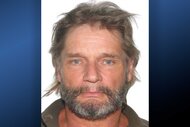
Suspect ID'd in Connection with Colonial Parkway Murders

Nick Godejohn Opens Up About Gypsy Rose, Childhood


Texas Mom Finds Slain Daughter in Apartment Bathtub

Felicity Huffman Adresses College Admissions Scandal
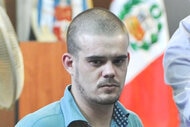
Hear Joran van der Sloot's Haunting Recorded Confession

9-Year-Old Who Disappeared During Bike Ride Found Safe

Arrest Made in Connection to Tupac Shakur Case: AP

Gypsy Rose Blanchard Set To Be Paroled Later This Year
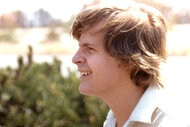
Australian Pleads Guilty In Gay Mathematician’s 1988 Murder

Woman Accused of Killing Bride in DUI Crash Denied Bond
Recommended for you.

Michigan Grandma Repeatedly Shot Grandson, Killing Him

15-Year-Old, Boyfriend Plot Her Father's Murder
This story is over 5 years old.
Florida's greatest pot-smuggling racecar driver just got out of prison.

ORIGINAL REPORTING ON EVERYTHING THAT MATTERS IN YOUR INBOX.
By signing up, you agree to the Terms of Use and Privacy Policy & to receive electronic communications from Vice Media Group, which may include marketing promotions, advertisements and sponsored content.

- Subscribe Now
- Digital Editions

Top 10 powerboat racing icons that helped make boating what it is today
- Top stories
Hugo Peel explores the top ten power-boating events, people and inventions that have influenced today’s sportsboats...
Powerboat racing may seem a world away from the type of cruising most of us do but the sportsboats we enjoy today wouldn’t be half as good as they are without the racers, designers and builders whose heroic efforts helped shape them.
Auto-boat racing, as it was originally known, traces its history back to the late 19th century and for a brief period was even an Olympic sport, with races staged off the Isle of Wight in 1908. However, it wasn’t until the 1960s and 1970s that the sport exploded in popularity as developments in engineering, materials, speed, safety and propulsion really took off.
Racing was the anvil on which these promising technologies were forged. So what are the ten most significant events, inventions and people that have contributed to today’s impressive levels of performance, safety and utility?
While many of these names and events may be unfamiliar now, they are the stuff of legend to all who recall the glory days of British powerboat racing.
1. The Cowes-Torquay-Cowes offshore powerboat race
Many people regard offshore powerboat racing as the ultimate challenge for craft and crew. Arguably the most challenging race of all and certainly one of the oldest is the legendary Cowes-Torquay competition.
Initiated in 1961 by Daily Express newspaper magnate and keen yachtsman, Sir Max Aitken, who foresaw it would help grow the UK marine industry, it bred a string of British and international heroes and brands. This 200-mile race, now known as the Cowes-Torquay-Cowes, and its coveted Harmsworth Trophy, intermittently awarded since 1903, is still the one all top powerboat racers yearn to win.
The marathon Round Britain Powerboat Race started and finished off Portsmouth
2. The marathon Round Britain Powerboat Race
If a 200-mile race sounds challenging, the 1,500-mile endurance marathon that is the Round Britain Race is on an altogether different scale, yet it proved so appealing that it has been run three times over four decades.
The first BP-sponsored race in 1969 comprised ten stages over 1,459 miles and was won by Timo Mäkinen, a champion Finnish rally-driver in Avenger Too propelled by triple Mercury outboards – he averaged 37mph.
The 1984 race was sponsored by Everest double glazing and attracted famous names, including Italian racer/designer Fabio Buzzi driving White Iveco , a single-step GRP monohull with four 600bhp Iveco diesels. Against him was fellow Italian Renato della Valle in Ego Lamborghini , an aluminium-hull craft powered by two ear-splitting 800hp, race-tuned V12 Lamborghinis.
Article continues below…
Test driving the Sunseeker Hawk 38 prototype with Fabio Buzzi
Lamborghini boat: tecnomar delivers first official ‘fighting bull’ branded yacht.
Victory went to Buzzi who, after the 157-mile Dundee-Whitby leg, during which White Iveco averaged a staggering 69 knots, dismissed it with shrug saying: ‘In Italy, this is just a cruising boat.’
The race was revived in 2008 attracting a field of 47 raceboats old and new, including a number of production RIBs and sportsboats from companies like Scorpion , Goldfish and Scanner. The favourites included Fabio Buzzi again in his classic four-engined Red FPT , and Austrian casino millionaire Hannes Bohinc in another Buzzi-designed monohull Wettpunkt .
This time the overall winner was a Greek entry Blue FPT navigated by Britain’s Dag Pike, who at 75 years old, was the event’s oldest competitor. Many of the production boats also did remarkably well, showing just how far they have come in recent years.
Steve Curtis MBE is powerboat racing royalty
3. Powerboat racer Steve Curtis
If the Cowes-Torquay-Cowes is the benchmark, surely the top driver must be found among its winners? Home-grown contenders must include Tommy Sopwith, a winner in 1961, 1968 and 1970 and the Gardner brothers, Charles and Jimmy, who clocked up victories in 1964 with their Bertram 31 Surfrider , and again in 1967 in the iconic Sonny Levi-designed Surfury .
On the worldwide stage, Italy’s Renato Della Valle won four Cowes Torquay Cowes races in a row from 1982 to 1985. Hannes Bohinc collected the trophies in 1995 and 2003 and another German, Markus Hendricks, whose boat sank on the 2008 Round Britain, took a re-engined 34-year-old monohull, Cinzano , to victory in 2009 and 2011.
They are all brilliant in their way but how could this category ignore the UK’s Steve Curtis MBE, owner of Cougar Marine, with no fewer than eight Class One powerboat racing world championships in fearsome 175mph catamarans? Curtis’s 2016 victory in the roughest ever Cowes Torquay Cowes race, in a 30-year-old aluminium boat sealed his place in the history books.
4. Lady Violet Aitken – the first lady of fast
The field of legendary female powerboat racers may be smaller but is no less worthy for it with three principal candidates – two titled British ladies and an American grandmother.
From the USA, Betty Cook – focussed, smart, and tough – arrived with her 36ft Cigarette Kaama and blew away the opposition in the 1978 Cowes Torquay Cowes race. She went on to secure two world championships.
The British aristocracy provides the eccentric and brave Countess of Arran, who fielded fast if unconventional designs of three-pointers like Highland Fling among others. She was described by The Guardian in her obituary as ‘beautiful, vivacious, funny, fun and entrancing’.
But our top female driver is Lady Violet Aitken, wife of Cowes-Torquay founder Sir Max Aitken and Ladies’ Trophy winner on several occasions. Racing is still in the blood as her daughter Laura and granddaughter Lucci are both keen powerboat racers.
Buzzi’s legendary status stems from 40 years of work in the marine industry
5. Powerboat designer Fabio Buzzi
The late Fabio Buzzi is a legend, both behind the helm and at the drawing board. In more than 40 years of activity, his company FB Design has won a staggering 52 world championships; seven Harmsworth Trophies; two Round Britains; and set no less than 56 world speed records in both European and American classes.
Buzzi designed the boat that has won more races than any other powerboat in history, the quadruple-engined, be-winged 44ft Cesa/Gancia dei Gancia . Today, the descendants of these monohull designs are found in service with government and military agencies all around the world, as well as leisure craft like the Sunseeker XS2000 and Hawk 38 .
But the competition is hard-fought. Sonny Levi’s delta-shaped race-boats A’Speranziella , Merry-go-Round , Alto Volante , and Surfury leave lasting memories by their sheer performance and poise. And their legacy, the Levi Corsair, is still made today.
The UK’s Don Shead also runs Buzzi close having designed ten Cowes-Torquay winners and the 1984 Round Britain race winner. The early Sunseeker ranges also came from his drawing board.
Peter Thornycroft and Alan Burnard merit attention as designers of the iconic Nelson and Fairey hulls respectively, many of which are still in service today. But the sheer scale of Fabio’s achievements trumps them all.
The Mercury V8 took powerboating to another level
6. The Mercury V8 engine
Early racers only had American petrol V8s for choice, mainly Ford Dearborn Interceptors, tweaked to deliver big torque and 300-400bhp. There were also a few marinised Jaguar straight-six engines, which consumed oil at a terrifying rate and were fragile. Then Carl Kiekhaefer, head of US outboard giant Mercury, refined numerous Mercury Racing V8s and Lamborghini V12s providing up to 850bhp and things took off. Literally.
To this market came car racing engineers Ilmor in the 1990s with a tuned Dodge Viper V10 engine, pushing out a reliable 700-800bhp. The Italians, at the behest of Fabio Buzzi, developed the 16-litre 1,000hp Seatek diesel for ultra-marathon events, providing unparalleled torque with (relatively) light weight and reliability.
A special mention for the maddest motors must go to Tommy Sopwith, who put a pair of helicopter turbines into a 44ft Don Shead hull delivering over 1500bhp and Domenico Achilli, who ‘glued’ two Subaru flat-four rally car engines together, and split our eardrums while winning the 1990 Cowes Torquay Cowes race.
But for sheer consistency and the countless number of ever-faster, smoother, more reliable production engines its powerboat racing successes have spawned, Mercury and its big displacement V8s have to take the crown.
Offering horizontal thrust and reduced drag, the sterndrive greatly increased the speed and efficiency of both race and pleasure craft
7. The sterndrive unit
Early shaft-driven race-boats normally placed engines amidships with straight shafts to the propellers. Then the vee-drive option enabled engines to be moved astern for better weight distribution but, in both cases, the angle of thrust was still pushing the hull ‘uphill’.
With the arrival of the sterndrive came horizontal thrust to harness the growing power of engines, and hugely reduced hydrodynamic drag by doing away with separate rudders, shafts and P-brackets. This greatly increased both speed and efficiency while the ability to trim the angle of thrust also enabled drivers to adjust the boat’s trim to suit differing sea conditions.
Surface-drives from Arneson and Trimax reduced drag even further but at the cost of low speed manoeuvrability and we mustn’t overlook the impact of the outboard engine on both race and leisure sportsboats.
However, for sheer versatility, the impact it has had on both powerboat racing and leisure craft, and its ability to work equally well with both petrol and diesel engines, the sterndrive has to take it.
Hunt’s deep-vee design proved a powerboat game-changer
8. Racing hull designer Ray Hunt
The most successful hull builders embraced the fast-developing world of engineering and materials as well as developments in design. Cold-molded mahogany plywood gave way to GRP, which in turn surrendered to carbon-fibre reinforced by Kevlar.
However, it’s hard to think of a bigger leap in hull design than Ray Hunt’s deep-vee concept, demonstrating an immediate and staggering superiority over previous hard and rounded chines. Nothing underpins this assertion better than Dick Bertram’s 1961 Miami-Nassau victory in his prototype Moppie – finishing a whole day ahead of the third-placed boat.
The likes of Levi, Shead and Bertram all helped refine the concept but the winner has to be Ray Hunt who, along with Dick Bertram’s investment and encouragement, became the grandfather of today’s sportsboats.
Peter Dredge skims Vector Martini to an average speed of 94.5mph during the 2015 Cowes Torquay Cowes race. Photo: Alamy
9. Speed record breaker Peter Dredge
World Water Speed records set by the likes of Donald Campbell’s Bluebird and Richard Branson’s Virgin Atlantic Challenger II are momentous achievements in their fields but their designs have bred few, if any, current sportsboats. Offshore powerboat racing records may not be as well publicised but are arguably far more relevant.
The average speed records of historic races like the Cowes Torquay Cowes race are a perfect demonstration of the improvements made in powertrains, hull design and strength. The first race in 1961 was won by a 24ft wooden Christina averaging 24.5mph. It took another two years to break 40mph, and a further four to exceed 50mph. In 1969 the record tumbled again with an average speed of over 60mph.
A gap of six years then ensued before the record climbed over 70mph and a further 13 years for technology to reach an average exceeding 80mph. A very calm race in 1990 saw the Italians hit over 90mph average – and then we waited 25 years before that speed was finally exceeded in 2015.
So until that record is beaten, preferably with a speed of more than 100mph, our winner is the current record holder Peter Dredge who propelled the awesome 1,500bhp, 44ft Vector Martini to victory at a remarkable average speed of 94.5mph.
Dag Pike, the brains behind so many great powerboat victories
10. National treasure Dag Pike
No top ten list could be complete without mention of those quiet but significant contributors to the sport of offshore powerboat racing. Among those names must be Class-3 racer, commentator, sport historian and MBY ’s longest-serving contributor Ray Bulman, who passed away last year .
The racer, organiser, enthusiast and flamboyant, chain-smoking Tim Powell also has to be in the running. Other characters like Commander Petroni of Italy’s Tornado Racing Team and Tommy Sopwith’s regular crew Charles de Selincourt, who guided him to victory in several Cowes Torquay Cowes races also deserve mentions.
But my National Treasure award goes to Dag Pike; writer, raconteur and navigator extraordinaire who has been the brains behind countless race wins for dozens of different drivers. Having been shipwrecked eight times himself but also having rescued more than eight people in his long career offshore, he has in his own words ‘balanced the books’.
The last word
As with any top ten list it can never be comprehensive and will always be open to differences of opinion but that’s not the point of this article. We simply invite you to ponder that, whatever boat you drive and whatever propels it, its performance and seaworthiness possesses at least some of the DNA of the many great raceboats, designers, engineers and technologies, forged in the heat of offshore battle.
First published in the June 2019 issue of Motor Boat & Yachting.
Navan S30 & C30 tour: Exceptional new Axopar rival
Axopar 29 yacht tour: exclusive tour by the man behind it, mayla gt first look: speed machine with outrageous looks, latest videos, galeon 440 fly sea trial: you won’t believe how much they’ve packed in, parker sorrento yacht tour: 50-knot cruiser with a killer aft cabin, yamarin 80 dc tour: a new direction for the nordic day cruiser.
Former federal MP running for Logan mayor vows to return a donation from a convicted corrupt businessman
A former federal MP who is running for mayor in Queensland's Logan city has renounced a donation from a convicted corrupt businessman after the ABC questioned him about the campaign contribution.
Brett Raguse disclosed a $2,000 donation on Saturday from Wayne Myers, a former political lobbyist who served jail time for helping funnel bribes to an official at another Queensland council.
Mr Raguse initially confirmed to the ABC that "Wayne has given dollars", adding that "Wayne has finished his time, served his time [and] I've got nothing to hide".
But Mr Raguse, who was the Labor MP for Forde in the Rudd and Gillard governments from 2007 to 2010, said if the donation did not pass the "public smell test and if people had an issue with it, clearly I would give it back".
He called the ABC back an hour later to say he had talked to his campaign team and decided to return Myers' donation.
The donation appeared on the Electoral Commission of Queensland website a week out from the state's local government elections on Saturday.
Mr Raguse said Myers had paid the $2,000 to attend his campaign launch at Springwood Towers last Thursday.
Myers, who was linked with Labor and Liberal politicians and served on state government boards but now lists himself as "retired", was jailed in 2019 over a corruption scandal at Ipswich City Council.
A judge found Myers was an "enthusiastic participant" in a scheme to pay $115,000 of kickbacks to Ipswich council chief executive Carl Wulff, via a bogus consultancy involving Wulff's wife.
Myers made the payments on behalf of a landfill contractor, who paid him almost $500,000.
He received a discount to his jail term in part because he agreed to secretly record Wulff for investigators, serving six months of a two-and-a-half-year jail sentence, which expired in August 2021.
Myers told the ABC he had "done the crime, done the time" and was "not dealing with councils or government or anything anymore".
"If Brett's got a problem because of perception, then fine, I'll take it back," he said.
"I mean, he never spoke to me about it… I'm sure if I contact the other guys that are running and said, 'I want to make a donation of $1,000 or $2,000', they'd probably welcome it with open arms as well.
"Okay, I'm a previous convicted criminal, I've got to live with that for the rest of my life. It doesn't mean I'm a crook, doesn't mean I'm dishonest, doesn't mean I'm trying to do something dishonest."
Convicted criminals are not prohibited donors under Queensland electoral laws, which ban only property developers.
Myers said he was "certainly not a property developer, mate".
"I've known Brett a long time when he was the member for Forde. I'd like to see him win," he said.
"I'm not short of a dollar, even though I went through some, you know, some tough times. If Brett wants to give it back, mate, that's fine, it's up to him."
Logan council has also been bedevilled by corruption issues in recent years.
Former mayor Luke Smith was given a suspended sentence last year after pleading guilty to offences including receiving a secret commission, in the form of a boat from a political donor.
Outgoing Logan Mayor Darren Power, who has urged voters to check which donors were supporting candidates, said he would "not have accepted" a donation from Myers.
"I can't believe he's done it, to be honest."
- X (formerly Twitter)
- Local Elections
- Local Government
- Logan Central
- Political Donations
- Coronavirus
- Covid-19 In-depth
- Navigate Bermuda
- RG Fantasy League
- Classifieds
- Drive For Change
- Terms of Service

Businessman and powerboat racer dies
A successful businessman who founded his first company six years after he was kicked out of school was a man who liked “showing the world what was possible”.
However, Mike Marshall, whose string of businesses helped build the island over decades, placed no importance on personal wealth but enjoyed accomplishment, his sons Alex and Craig said.
The two added that Mr Marshall, whose funeral was held last week, was driven by an urge to be in charge of his own affairs.
The entrepreneur started at least a dozen companies. He was a record-setting founding member of the Bermuda Power Boat Association, started his own shipping business and helped pave the runway for Bermuda’s airport in the 1970s.
He was a third-generation Bermudian with roots in the Azores – his father, John, became the head of immigration for Bermuda’s Portuguese community.
Mr Marshall attended Warwick Academy until he was 15, when he left to become a junior salesman at the E.R. Aubrey jewellery firm.
He saved his earnings and set off at 18 for the US to work in a jewellery store in Maine – followed by a stint selling cars.
His son, Craig, told The Royal Gazette : “He was told in school he would amount to nothing, and his response was just ‵OK, cool’.
“In 1962, at 21, he came back to Bermuda with a handful of pounds and started the island’s first commercial cleaning company, Marshall’s Maintenance.”
The company is still in business almost 60 years later.
Mr Marshall told the Mid-Ocean News, where he was profiled as a successful business maverick in 1968: “I have done well and it’s only through the help of others.”
He said he had nothing but “a bundle of ideas and a bit of drive”.
Mr Marshall added: “Sometimes it’s a gamble, but if you never try, you never win.”
He founded Marshall’s Asphalt, later East End Asphalt, in the mid-1960s.
His son, Alex, said: “That almost ended up in disaster.
“The plant was dynamited by a rival – twice.
“In 1967, it got blown up before it was insured.”
But Mr Marshall shrugged off the attack, rebuilt the plant and insured it.
It was targeted a second time that year, on Christmas Eve.
Mr Marshall, according to family lore, had words with the individual he believed was responsible, and the problems stopped.
His import business grew to include bringing in cleaning chemicals as well as concrete products, which helped fuel Bermuda’s construction boom.
Mr Marshall also bought the Bermuda Stone Company from businessman Colin Horsefield.
His passion outside business was racing boats, in Bermuda and overseas.
Mr Marshall set a record in 1967 in a twin-engine speedboat.
His memorial said: “As he got older, he decided bigger boats were needed, and he upgraded to buying four container ships.
“At one point the ships were a lifeline supplying Bermuda when a major dock strike crippled the island.”
Mr Marshall became the island agent for Glastron Boats, one of the first fibreglass speedboats – one of which featured in a famous chase scene in the 1973 James Bond film Live and Let Die.
Mr Marshall not only bought the speedboat from the film, but had it placed on the roof of the Rosebank Theatre in Bermudiana Road in Hamilton for the movie’s Bermuda premiere.
Craig Marshall said: “He sold quite a lot of those boats on the island.”
Among Mr Marshall’s property coups was the purchase of a large property north of Dundonald Street on what was called Parker Hill, some of which he excavated for a concrete plant.
He sold off other parcels of the land at a profit.
He owned several Hamilton properties and in his early thirties ran unsuccessfully for a seat on the Corporation of Hamilton.
His shipping business, Caicos Cargo Ltd, based in the Turks and Caicos Islands, imported old Bermuda cars and many got a new lease of life as taxis.
Mr Marshall also brought in 750,000 tons of aggregate used to pave the airport runway in the 1970s.
He pitched in for the purchase of an aircraft in the 1980s and started Bermuda Executive Airways, which offered an air ambulance service.
Mr Marshall was twice married, to Bridget and then to Christine, who his family said was “at his side until the end”.
His sons said he was determined to be his own boss and saw his business success as a way of serving the island.
Alex recalled: “He was humble, a salt of the earth guy.
“One of the last times I saw him, I told him I was proud of him – and he asked me, ‘what for?’ ”
Craig added: “I will continue his legacy.
“But I feel like a child in his shoes.”
• John Michael Marshall, whose businesses spanned cleaning, shipping and construction, was born on November 2, 1939. He died on September 16, 2021, aged 81.
You must be Registered or Signed in to post comment or to vote.

- Electronic Edition
- Registration
- Privacy Policy
How Cocaine Cowboys Willy Falcon And Sal Magluta Were Finally Caught
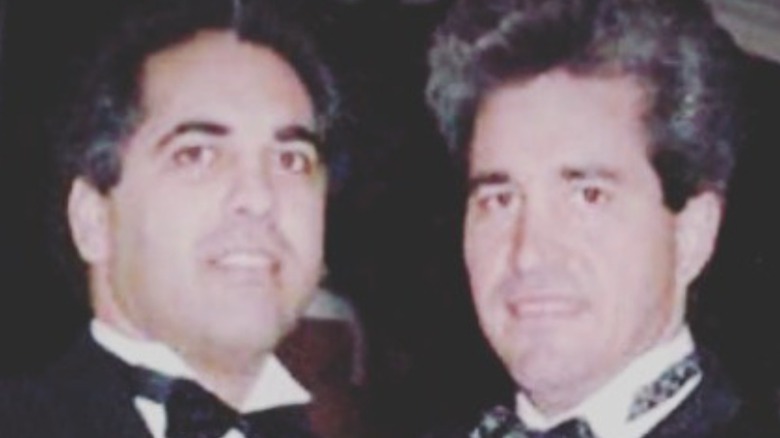
It's not like it was a secret. Federal investigators knew for years that Willy Falcon and Salvador Magluta were bringing tons of cocaine into Miami. The first generation Cuban immigrants who had been friends since high school got involved with an offshore powerboat racing team, an extra-curricular that evolved into a drug smuggling business thanks to the ability of those boats to ferry drugs from the Bahamas — a drop off point for Columbian drug lords of the day — back to Miami, according to the New York Daily News.
By the time Falcon and Magluta were indicted in 1991, federal prosecutors alleged that they had smuggled 75 tons of cocaine into the U.S. since 1978, amassing $2.1 billion in a combination of assets like real estate, and, of course, cash, according to the Miami New Times .
Still, the so-called "Cocaine Cowboys" were never convicted of trafficking drugs. Instead, federal prosecutors eventually convicted Falcon and Magluta mostly for money laundering, which the outlaw businessmen had to do a lot of in various creative ways, per the Miami New Times. The two men were flashy with their expenditures, though, and were very much on the radar of various law enforcement agencies.
Sean Convoy, a supervisor for the U.S. Marshals Service in Miami, told the Miami New Times, "All the other smugglers talked about how invincible they were. I don't think there was a police agency here that didn't have something going at some time to try and catch them."
Willy Falcon and Sal Magluta got very different sentences
Though both Willy Falcon and Sal Magluta had a couple of scuffles with the law over the years, they always managed to get out of it, often using their wealth to hire teams of reputable defense attorneys. But federal prosecutors and the DEA were working all angles. They started investigating Magluta and Falcon's assets and expensive properties, that they set out to prove were part of a money laundering effort, according to The Miami New Times .
The DEA spent five years working on their case, finally convincing a grand jury to issue a 24-count indictment against Falcon, Magluta, and eight co-defendants. Both men were arrested, each at their sprawling Miami mansions, by a variety of federal, state and local law enforcement officers, per The Miami New Times. Though initially acquitted of the charges in 1996, it was later learned that Falcon and Magluta paid out roughly $24 million in legal fees and juror bribes, the New York Daily News reported.
In 1999, both men were indicted again on money laundering charges and for having a former attorney of theirs killed so he could not be a witness for the government, per The New York Daily News. Malguta pleaded not guilty, lost, and is currently serving 195 years in a federal prison.
Falcon pleaded guilty to money laundering, paid a $1 million fine and got a 20-year sentence. The Cuban-born Falcon was released from prison and deported to the Dominican Republic in 2018, according to NBC Miami .

3 INDICTED IN AIRCRAFT SCHEME LAUDERDALE BOAT…
Share this:.
- Click to share on Facebook (Opens in new window)
- Click to share on X (Opens in new window)
Daily e-Edition
Evening e-Edition
- Election 2024
- Restaurants
- Real Estate
- Things To Do
SUBSCRIBER ONLY
3 indicted in aircraft scheme lauderdale boat racer’s firm falsified parts inspections, u.s. says.
Daniel S. Campbell, a Fort Lauderdale powerboat racer, and two other men were charged on Thursday by a federal grand jury with selling falsely certified aircraft parts from a company Campbell owns in Missouri.
Authorities said the company, K.C. Aerospace in Kansas City, sold $247,302 in aircraft parts to Northwest Airlines between January 1989 and August 1990.
The parts were given false safety inspections, said Chris Whitley, spokesman for the U.S. Attorney’s Office in Kansas City.
Whitley said K.C. Aerospace may have misrepresented used parts as being new or claimed to overhaul parts that were never repaired.
Because Northwest paid for the parts with 38 checks through the mail, the men face 38 felony counts of mail fraud.
The other two men facing charges are former employees of K.C. Aerospace.
One is Gery Flattery, now president of Avion Technologies, an aircraft instrument repair shop at Fort Lauderdale-Hollywood International Airport. The other is David Craig McKee, a former K.C. Aerospace salesman.
If convicted on all 38 counts, each of the men could face up to 190 years in prison and up to $9.5 million in fines.
Campbell, 36, a Weston resident, adamantly denied the charges on Thursday. He blamed his problems on lax procedures by underlings.
“I’m really looking forward to an end to this,” he said. “I’ve been hoping this would come to a head for quite some time.”
Flattery could not be reached for comment on Thursday, despite three phone calls to his office. But in an interview with the Sun-Sentinel recently, Flattery denied accusations laid out in an FBI search warrant affidavit.
McKee also could not be reached for comment.
Campbell, Flattery and McKee are expected to voluntarily surrender to federal authorities in Kansas City next week.
Campbell founded K.C. Aerospace in 1985. Among the company’s customers were several large airlines, including Northwest, Continental and Pan American World Airways.
Federal officials say there is no proof that any airline accidents or malfunctions involved parts sold by K.C. Aerospace.
“However, it is easy to see how this type of fraud carries the potential for great disaster,” Jean Paul Bradshaw II, U.S. Attorney for the Western District of Missouri, said on Thursday in a prepared statement.
The FBI focused on K.C. Aerospace in March 1988, when a company manager wrote an anonymous letter pointing out possible criminal activities.
The FBI seized numerous files from K.C. Aerospace in August 1990, and the Federal Aviation Administration joined the investigation. Northwest Airlines also helped, federal officials said.
The FAA also notified the airlines that K.C. Aerospace “may have misrepresented the condition and source of material supplied to its customers.” The airlines located and inspected the parts.
The FBI said K.C. Aerospace issued 66 certification tags to Northwest Airlines that bore the forged signature of an FAA-certified mechanic. Among the parts sold to Northwest were generators, motors, hydraulic valves and other hydraulic systems components.
Campbell said the certification tags were forged by a “kid in the shipping department.”
“The question is whether I had knowledge,” he said on Thursday. “You have to ask yourself: Would an individual who runs a multimillion-dollar company go out and ask a $7-an-hour employee to do something like that?”
After the investigation into K.C. Aerospace was opened four years ago, Campbell moved to Broward County and went into the business of building powerboat engines and racing.
Driving a 46-foot Jaguar with four 1,200-horsepower engines, Campbell recently won the Space Coast Offshore Challenge in Cocoa Beach.
While K.C. Aerospace remains in business, selling used aircraft parts, it surrendered its federal repair station license after the investigation. Campbell still owns the company, but has little to do with its management, he said.
Flattery also moved to Broward County. Along with another former K.C. Aerospace employee, he started Avion Technologies two years ago.
Campbell operates Campbell Racing Enterprises Inc., which until recently had the same address as Avion Technologies: 594 SW 34th St., Fort Lauderdale. Campbell said he is moving Campbell Racing to north Dade County.
More in News

Crime and Public Safety | Hollywood pawn shop owner accused of money laundering, operating without license

Weather | South Florida under flood watch today and Saturday as Gulf system crosses state

National Politics | Biden and Trump ask voters if they’re ‘better off’ than they were 4 years ago. It’s complicated

No charges to be filed in fight involving Oklahoma nonbinary teen Nex Benedict, prosecutor says

IMAGES
COMMENTS
Benjamin Barry Kramer, the flashy South Florida powerboat racer convicted of ordering the notorious 1987 murder of business rival Don Aronow, is claiming that authorities sent him to prison knowing…
MIAMI — One of South Florida's most notorious drug kingpins was charged on Wednesday with the 1987 murder of millionaire powerboat builder Donald Aronow. Benjamin Barry Kramer, 38, a convicted ...
By David Ovalle, Miami Herald, Dec. 8, 2010--. Benjamin Kramer, the flashy South Florida powerboat racer imprisoned for ordering the 1987 assassination of rival Don Aronow, remains a convicted killer Tuesday after a Miami-Dade judge refused to toss out his conviction. Kramer pleaded no contest to manslaughter in 1996 and agreed to a 19-year ...
A Florida judge Tuesday refused to overturn the conviction of powerboat racer Benjamin Kramer, who was charged with ordering the 1987 assassination of powerboat. Skip to main content. Digital Boat Show. Under 40' Vessels 40'-80' Yachts (80FT+) Design. Brokerage. Accessories & Components Tent. Boater's University. Marine Services. News.
When Cigarette founder and powerboat racing champion Don Aronow was shot dead on 3 February 1987 in Miami, the boating world was convulsed, but not everybody was surprised. Emblematic of both the American dream and a particularly magnetic kind of American masculinity, Aronow was a frontiersman, a real-life Marlboro Man and a fearless racer.
Ben Kramer lived a double life as a successful powerboat racer and a convicted murderer. He was known for his exceptional skills in racing but had a darker side involving criminal activities. youtu.be ... Smith was convicted of second-degree murder in 1994 and sentenced to the maximum term of nine years to life in prison.
August. 30. Former champion powerboat racer and convicted drug trafficker Benjamin Barry Kramer was sentenced on Wednesday to 43 years in prison and fined $460,000 for laundering $11.5 million in ...
"At one time, two-thirds of our national champions were convicted drug smugglers," asserts John Crouse, powerboat racing historian and author of Searace: A History of Offshore Powerboat Racing.
Kramer, a world-class powerboat racer, built boats at Fort Apache Marina just down the street from Aronow's company. Kramer was already a convicted drug smuggler when he bought USA Racing from ...
Click here for a copy of the complaint. Fort Lauderdale - A Florida state court jury heard opening statements Tuesday in a wrongful death suit worth at least $2 million brought by the widow of champion powerboat racer Joey Gratton against Super Boat International Productions Inc., alleging rescue crews failed to pull Gratton from the water fast ...
Convicted Boston Marathon bomber Dzhokhar Tsarnaev must pay with his life for the suffering he unleashed at the race finish line two years ago, a federal jury decided Friday, delivering a major ...
A Murrieta jury Thursday deadlocked in the retrial of a convicted felon involved in a street racing crash in Rancho Mirage that killed an 81-year-old woman, prompting the judge to declare a ...
Benjamin Barry Kramer, the flashy South Florida powerboat racer convicted of ordering the notorious 1987 murder of business rival Don Aronow, is claiming that authorities sent him to prison knowing that the triggerman had cleared him of involvement in the slaying. ... A millionaire powerboat builder, Aronow was gunned down in February 1987 ...
Benjamin Barry Kramer, the flashy South Florida powerboat racer convicted of ordering the notorious 1987 murder of business rival Don Aronow, is claiming that authorities sent him to prison knowing that the triggerman had cleared him of involvement in the slaying. His proof: a purported February 2009 deathbed confession by triggerman Robert "Bobby'' Young in which the killer claimed he told ...
A former takeaway worker found with Bitcoin wallets worth more than £2 billion has been convicted of a crime linked to money laundering. Jian Wen, 42, was living in a flat above a Chinese ...
A Georgia man convicted of killing his former girlfriend 30 years ago is due to be put to death Wednesday in the state's first execution in over four years. Willie James Pye, 59, was convicted ...
FORT LAUDERDALE, Fla. -- Champion powerboat racer Benjamin Barry Kramer, his father and his business lawyer were convicted of running a multimillion-dollar marijuana smuggling ring and money ...
The former president has insisted that he will continue his campaign even if convicted and sentenced on any of the 91 criminal counts he has been indicted over. There is historical precedent.
Aronow Powerboat's Gary Garbrecht doesn't believe that this is a plausible scenario. "Ben and Don were boat racers," he says. "They had done deals together after the USA Racing Team deal.
Benjamin Barry Kramer, an international powerboat racing champion and a builder of racing boats, was charged today in a 44-count indictment stemming from a Federal investigation into drug ...
A realtor and powerboat racer in the Lake of the Ozarks is accused of attempting to hire a hitman to kill her former mother-in-law. Leigh Ann Bauman, 44, was arrested by the Missouri State Highway Patrol in March on suspicion of conspiracy to commit murder in the first degree, local outlet LakeExpo reports. She pleaded not guilty and was released on a $400,000 bond, according to LakeExpo.
(Kramer, who is a powerboat racing champion related to notorious mobster Meyer Lansky, ... Kramer was ultimately convicted of ordering a hit on rival kingpin and powerboat mogul Don Aronow in 1996.
Racing is still in the blood as her daughter Laura and granddaughter Lucci are both keen powerboat racers. Buzzi's legendary status stems from 40 years of work in the marine industry. 5. Powerboat designer Fabio Buzzi. The late Fabio Buzzi is a legend, both behind the helm and at the drawing board.
And as Hotel Scarface puts it, they used their status there to establish a "cocaine conglomerate" of friends and associates — many of whom were involved with the local powerboat racing circuit. Falcon and Magluta's cocaine cash — plus their new connections at The Mutiny Hotel — allowed them to finally pursue their dream of powerboat ...
Randy Thomas Lanier (born 1954) is a professional race car driver and convicted drug trafficker from the United States. He is best known for his racing efforts in the mid-1980s, including winning the 1984 IMSA Camel GT title for the wholly independent Blue Thunder Racing team, and for being arrested for marijuana smuggling in 1988 to support his racing efforts.
A former federal MP who is running for mayor of Queensland's Logan city has renounced a donation from a convicted corrupt businessman after the ABC questioned him about the campaign contribution.
Powerboat racer Mike Marshall after winning the 1967 Round the Island Race (Photograph supplied) ... Convicted sex offender removed from treatment court. 03/16/2024. Ridesharing comes to Bermuda ...
Malguta pleaded not guilty, lost, and is currently serving 195 years in a federal prison. Falcon pleaded guilty to money laundering, paid a $1 million fine and got a 20-year sentence. The Cuban-born Falcon was released from prison and deported to the Dominican Republic in 2018, according to NBC Miami. The "Cocaine Cowboys" were never convicted ...
Daniel S. Campbell, a Fort Lauderdale powerboat racer, and two other men were charged on Thursday by a federal grand jury with selling falsely certified aircraft parts from a company Campbell owns …